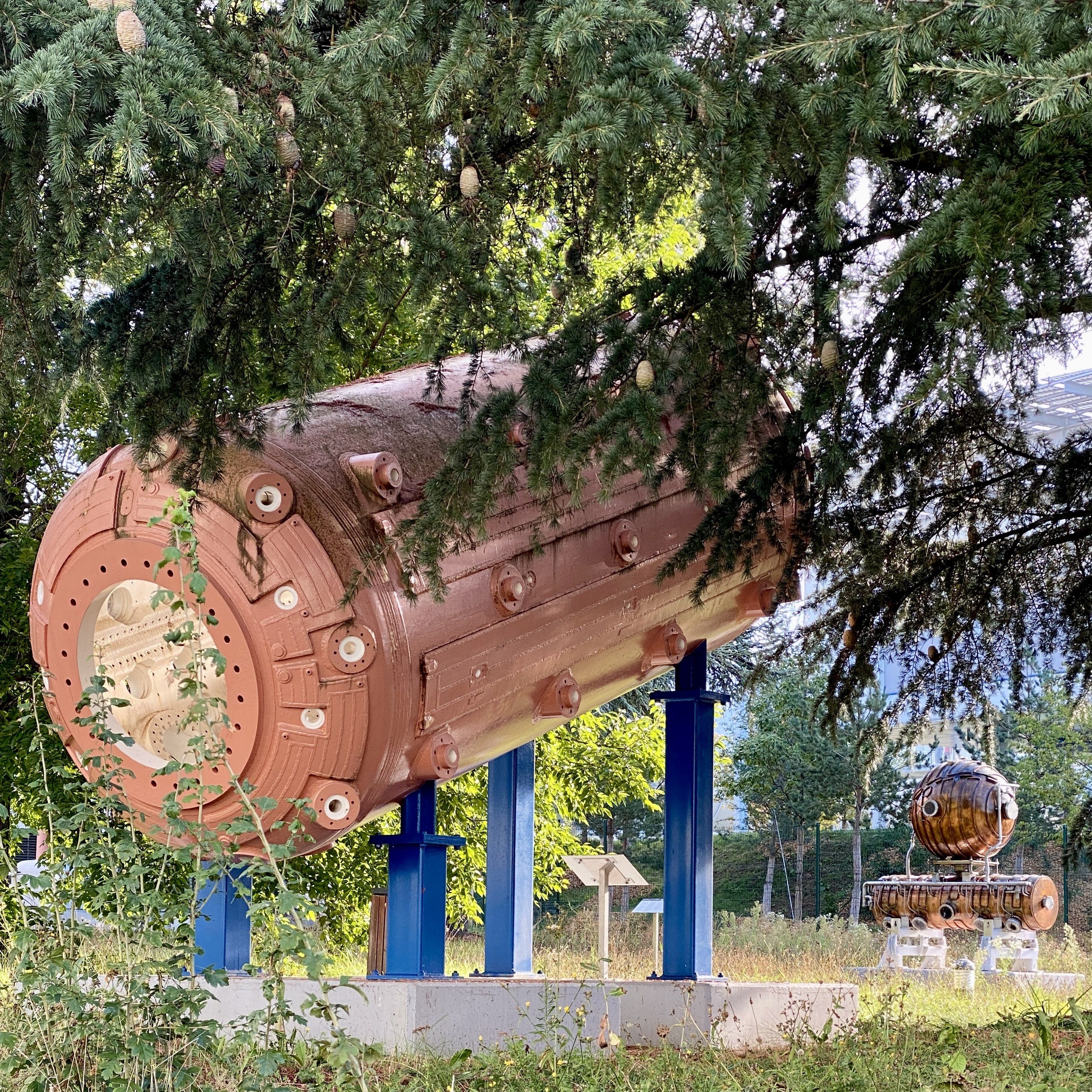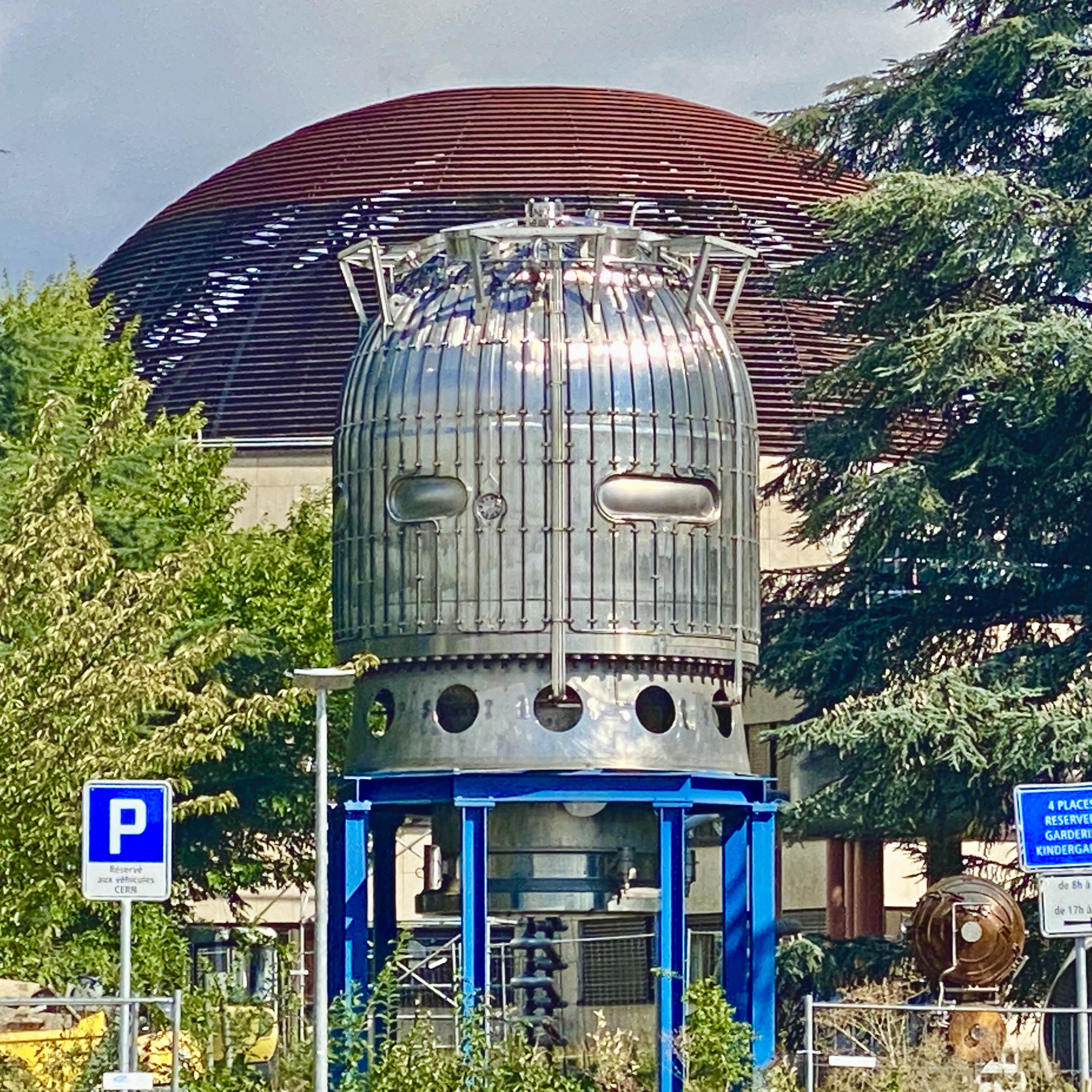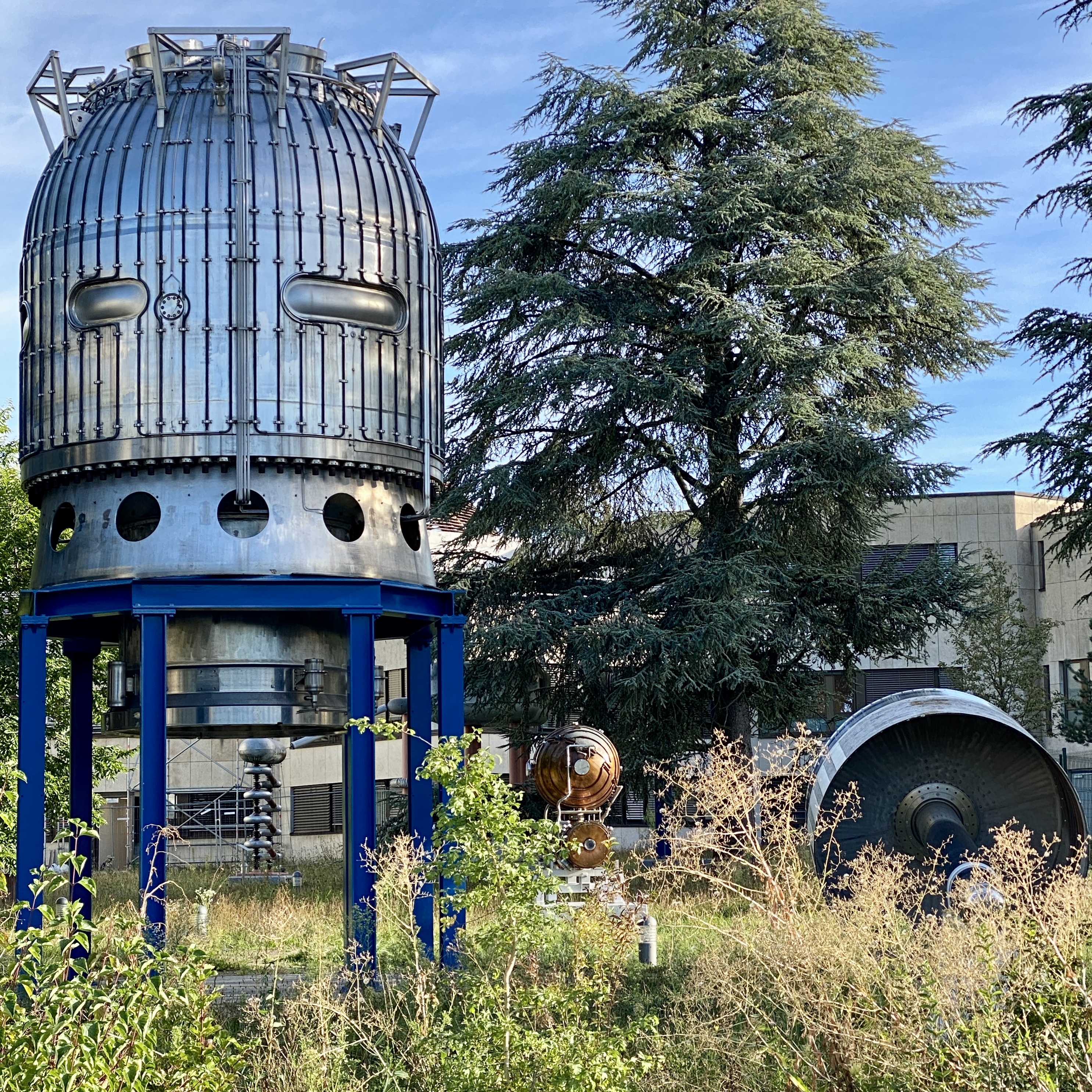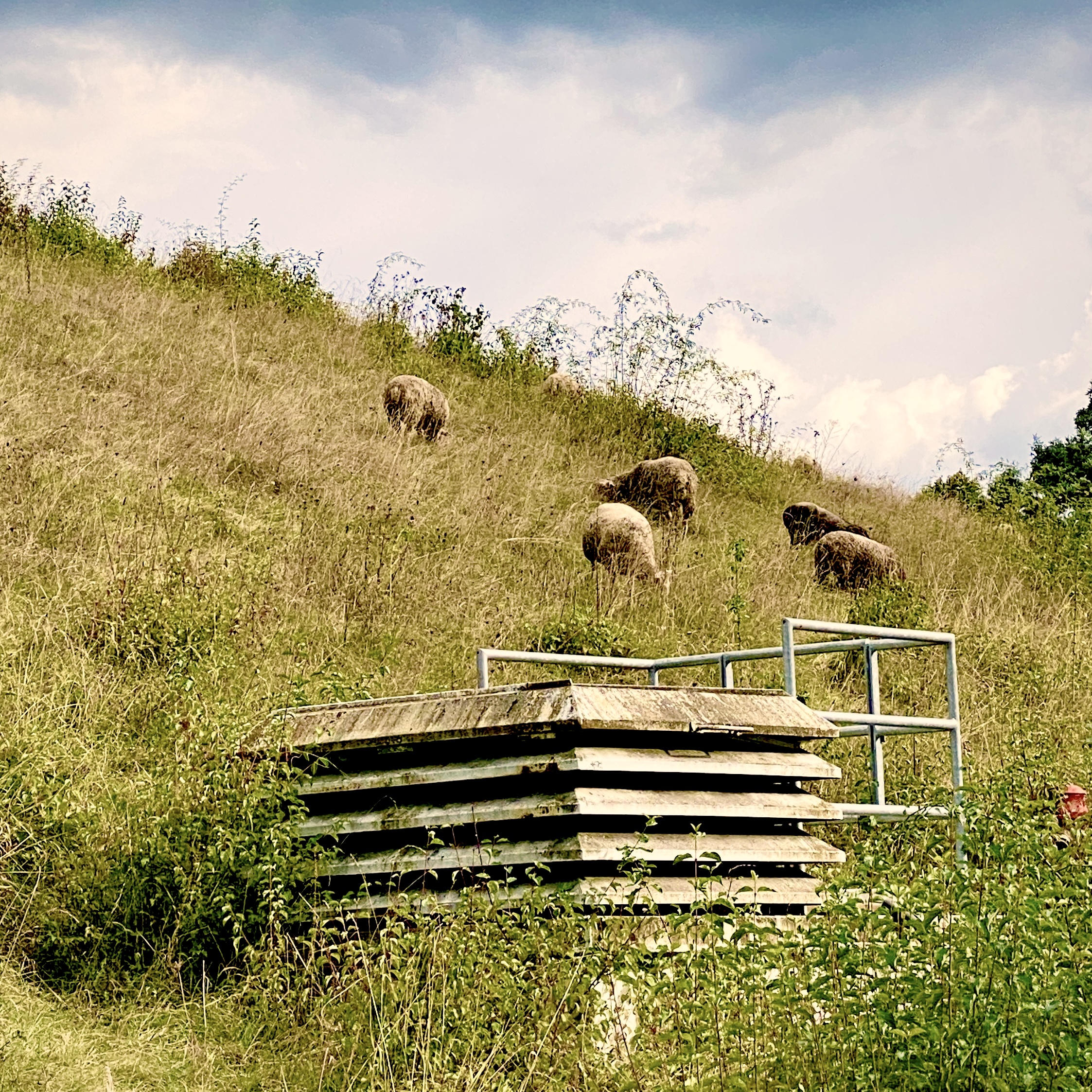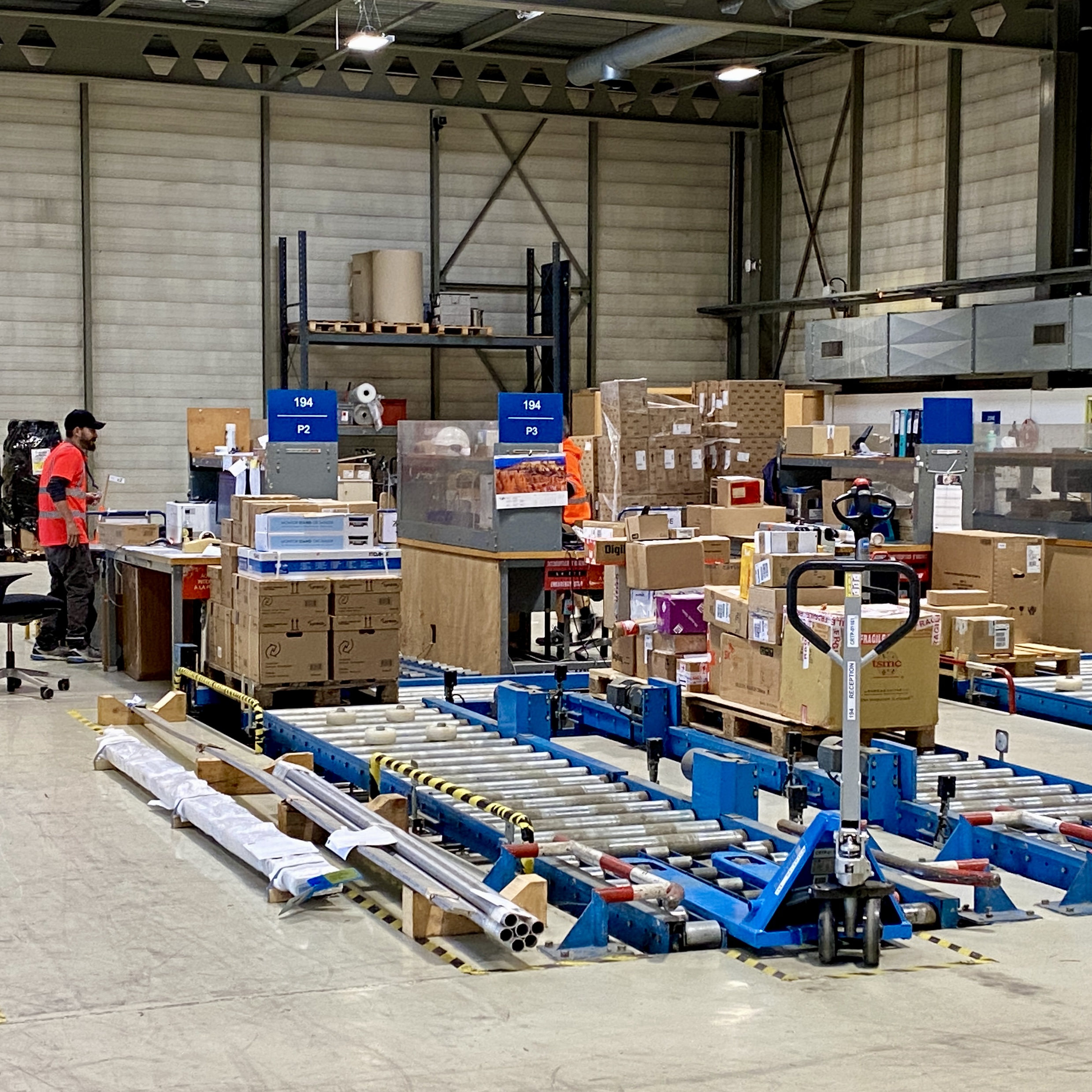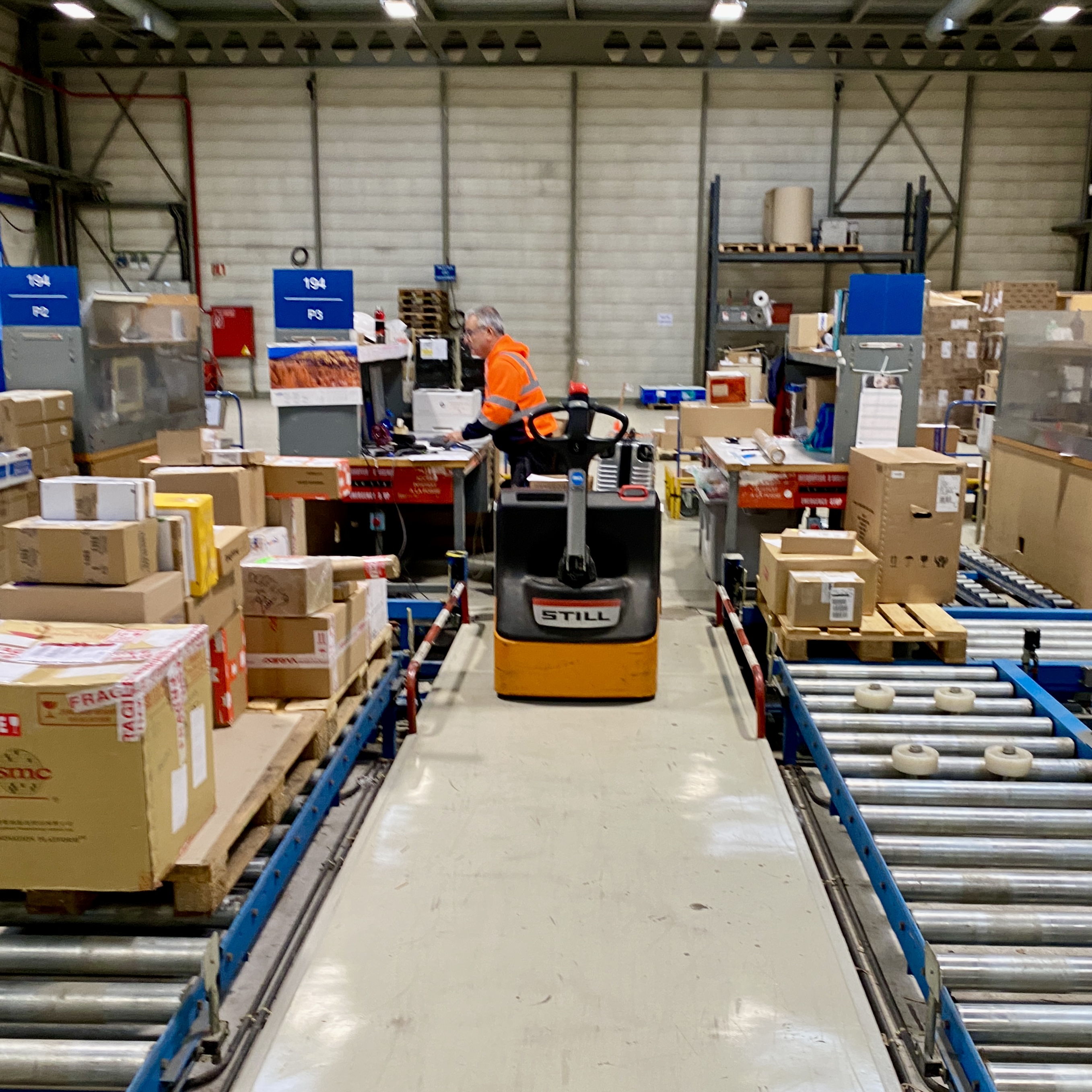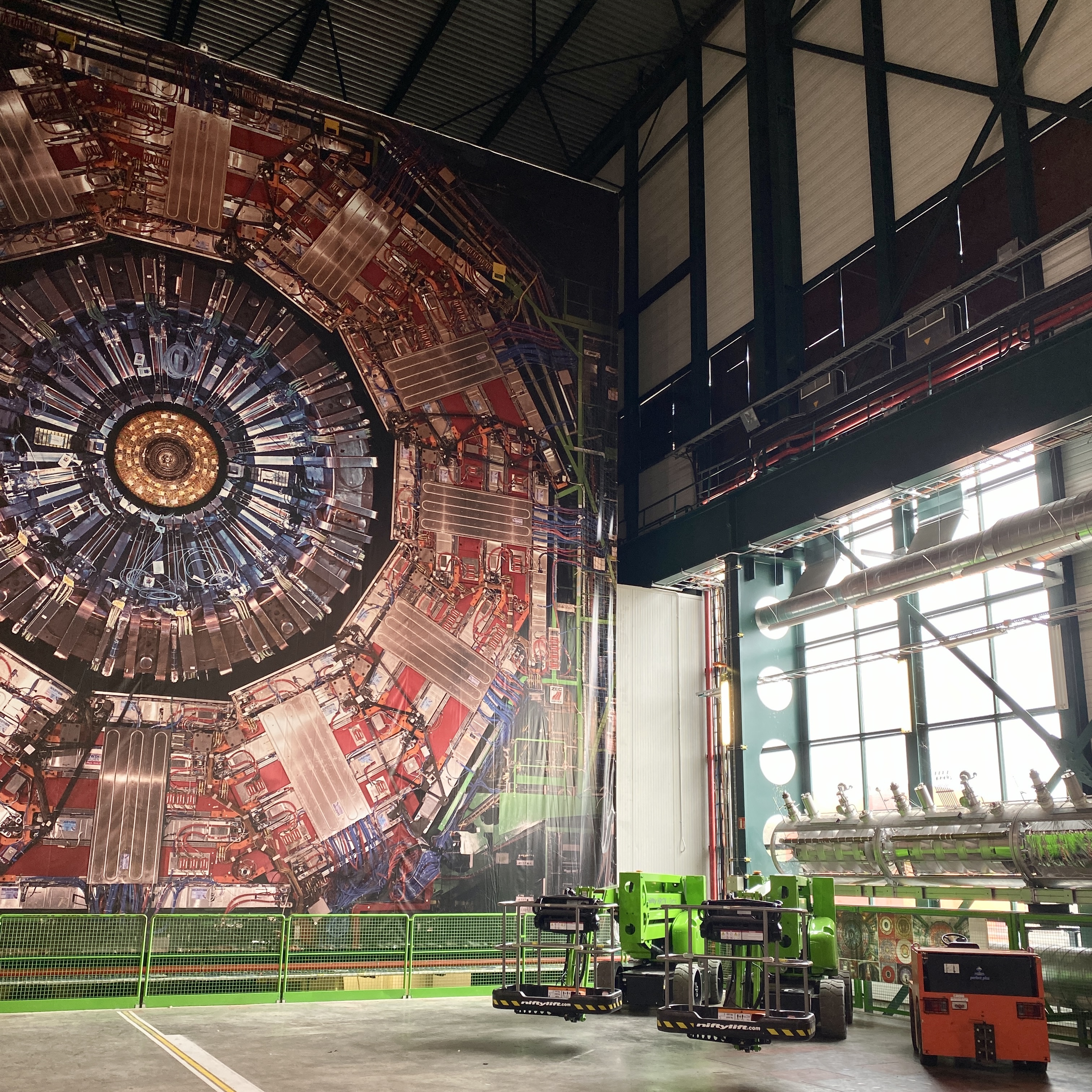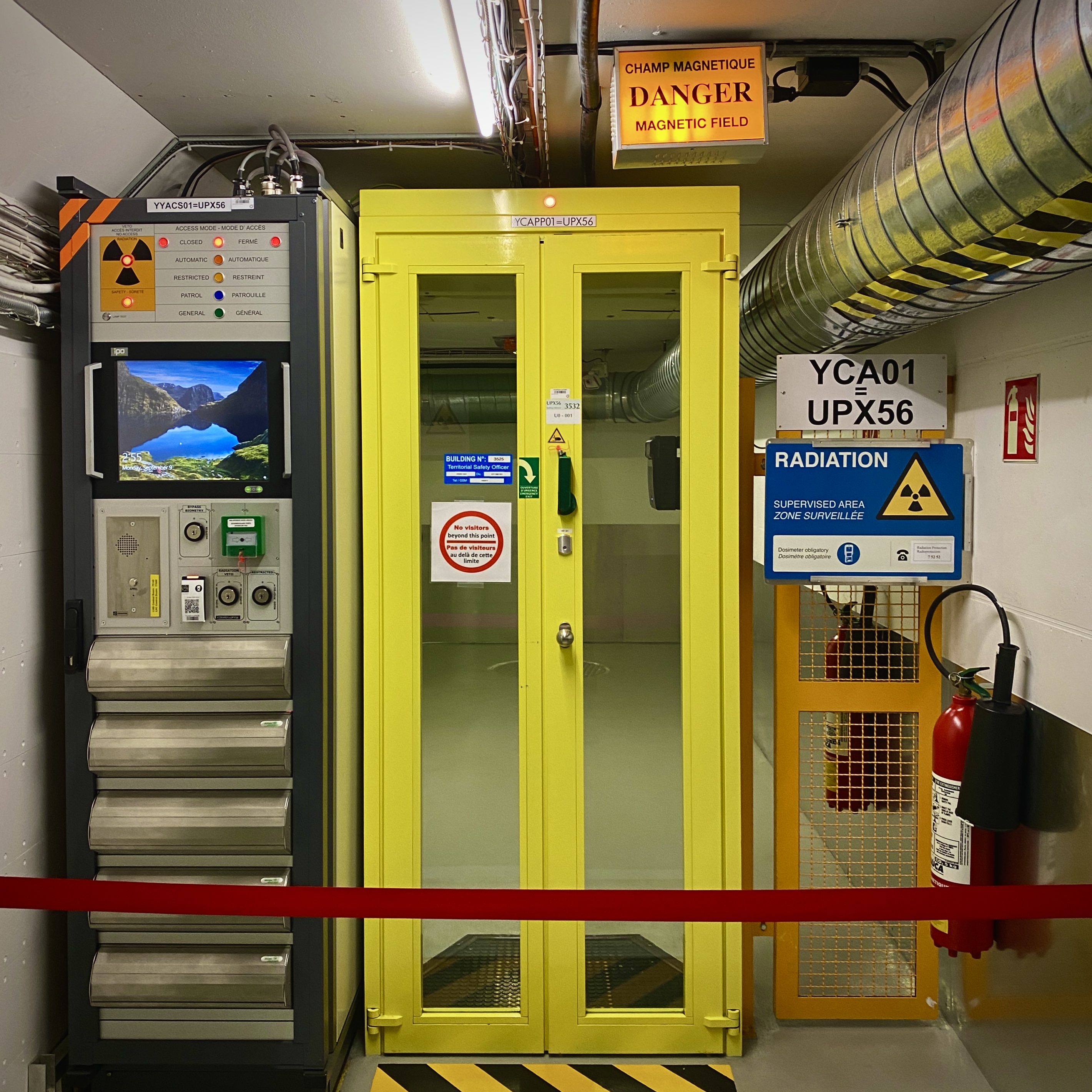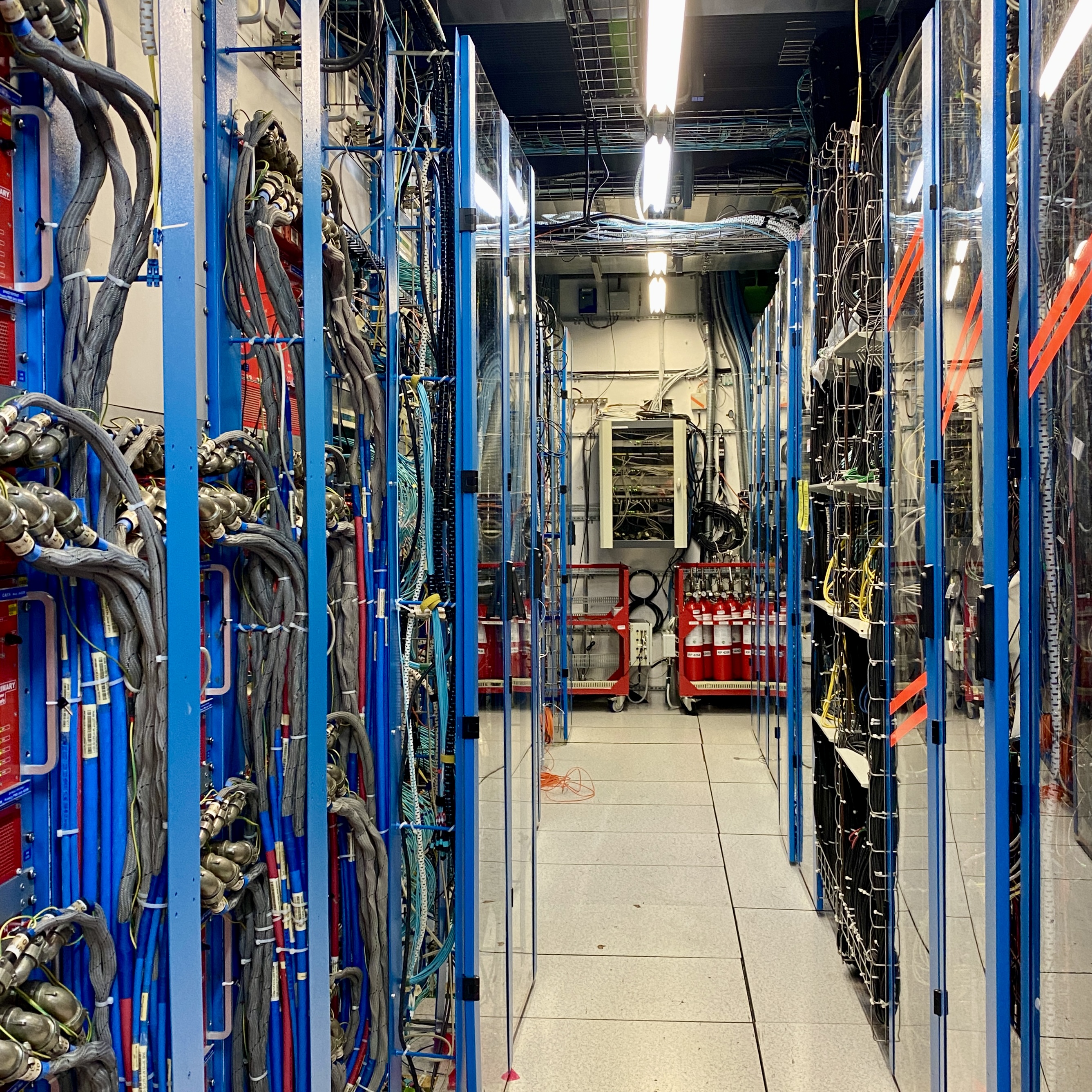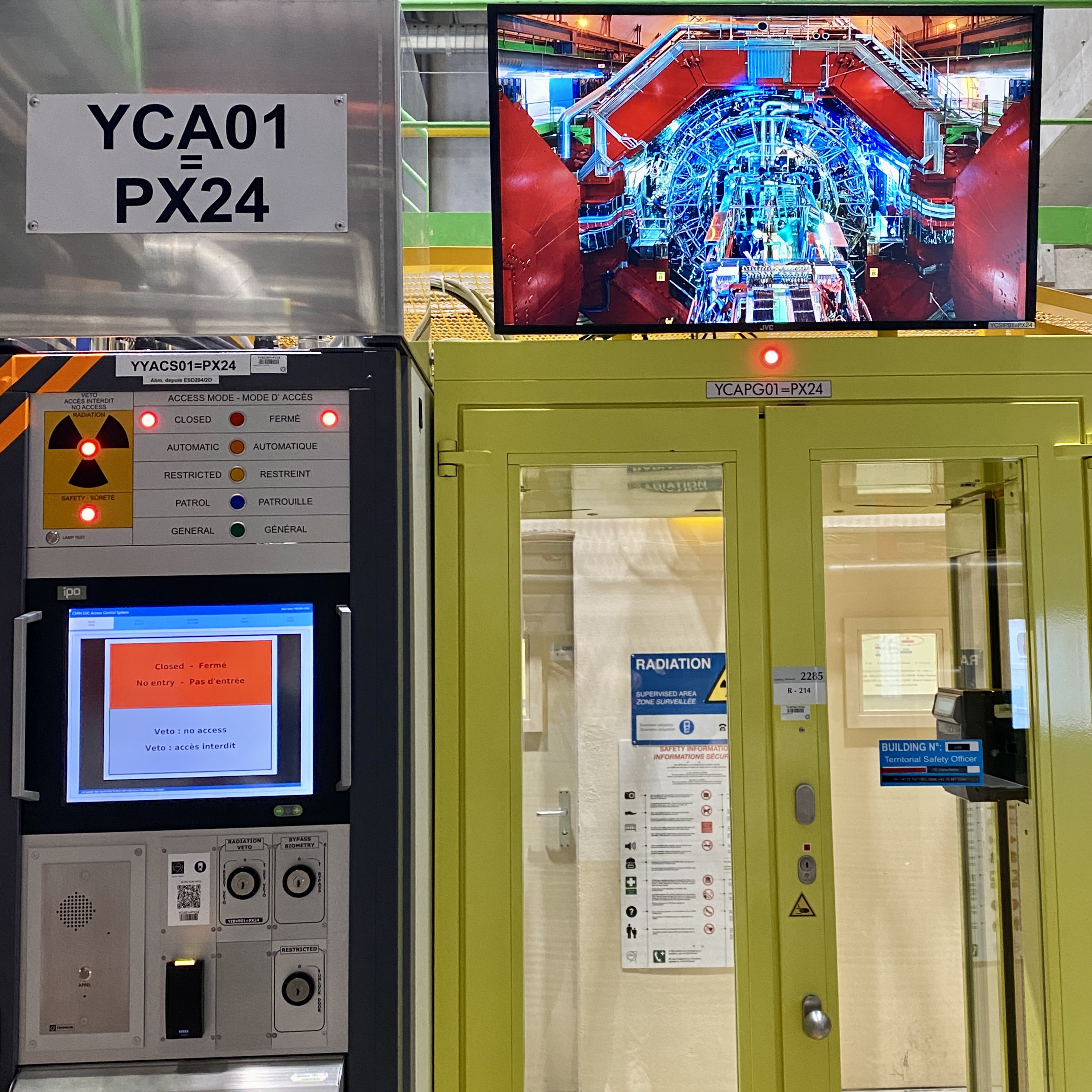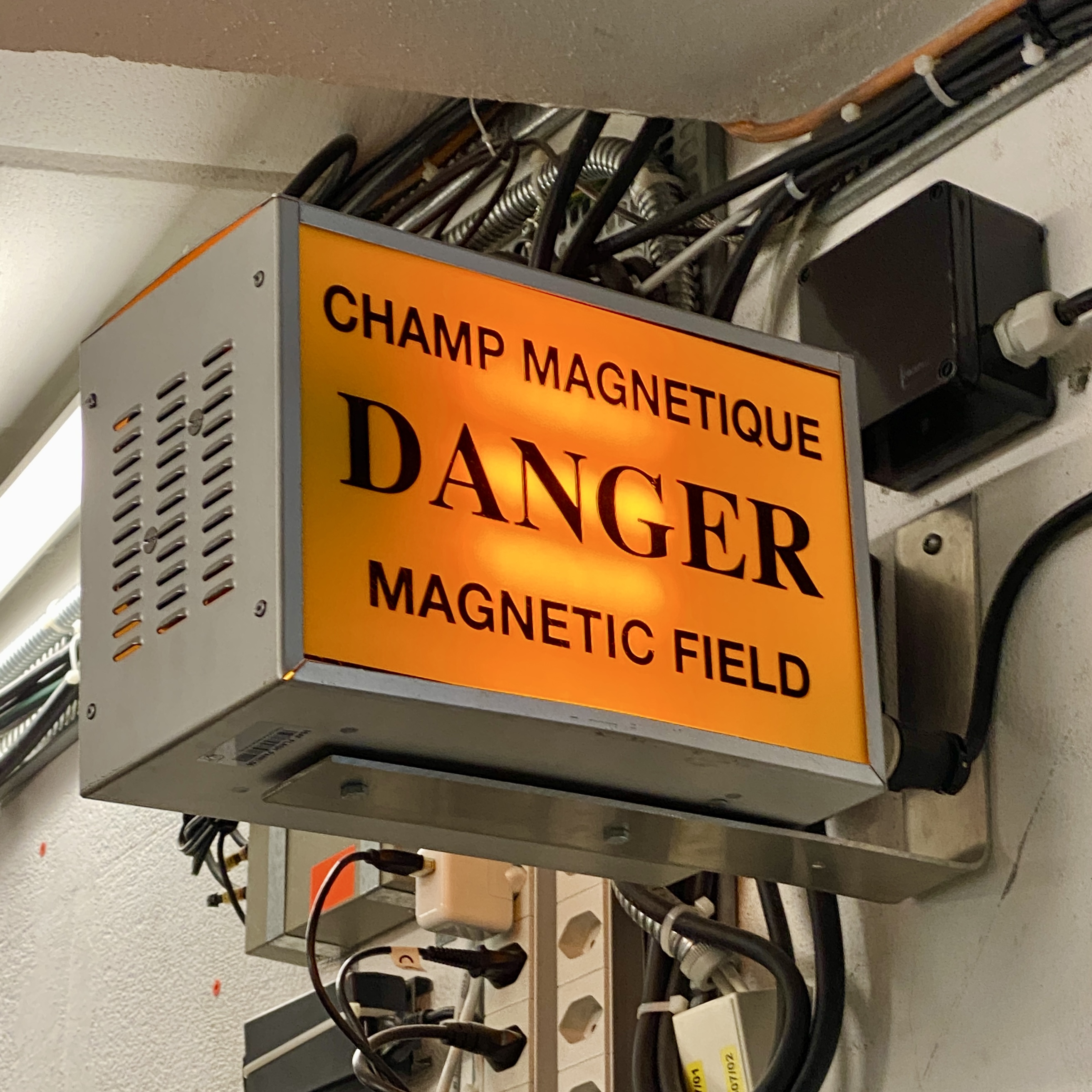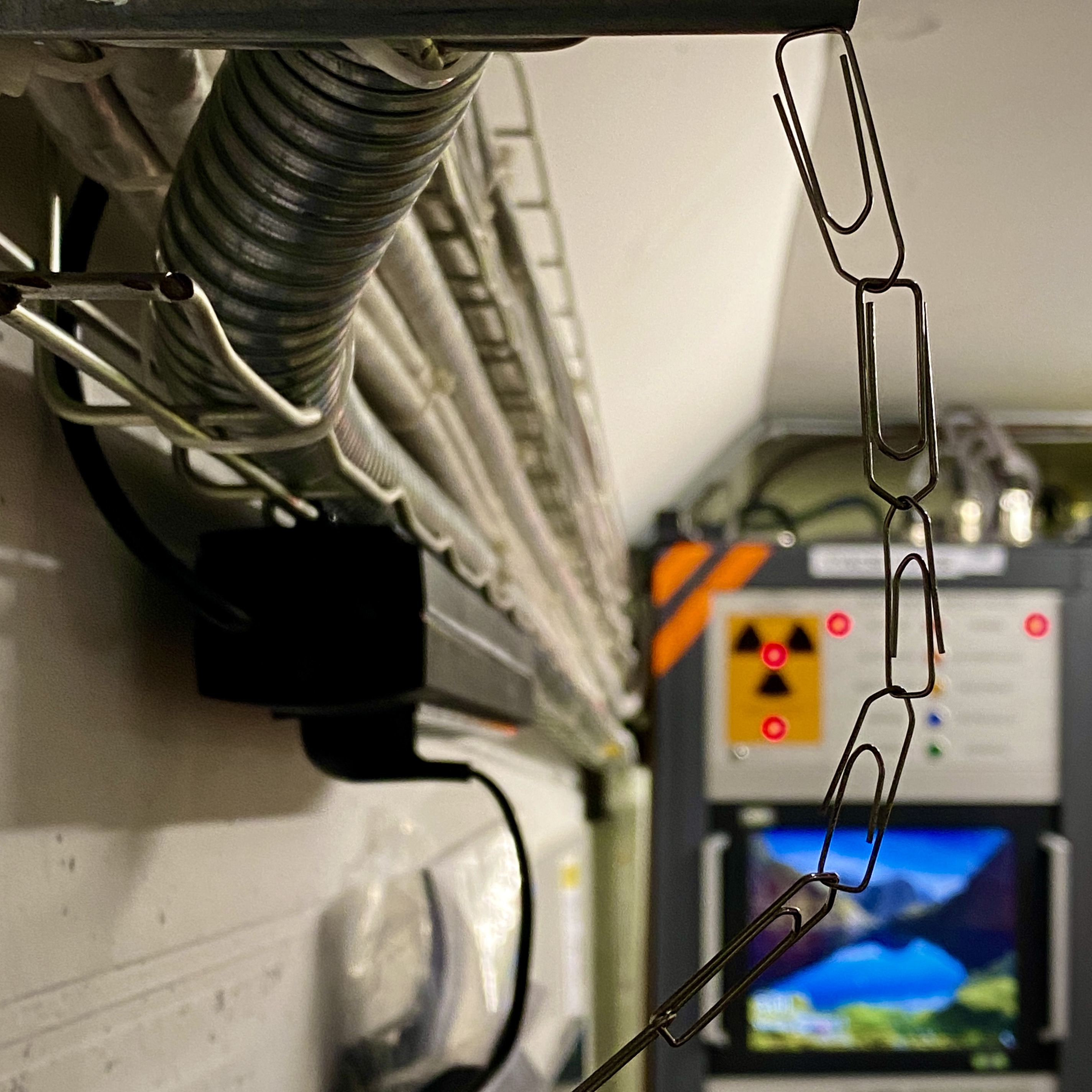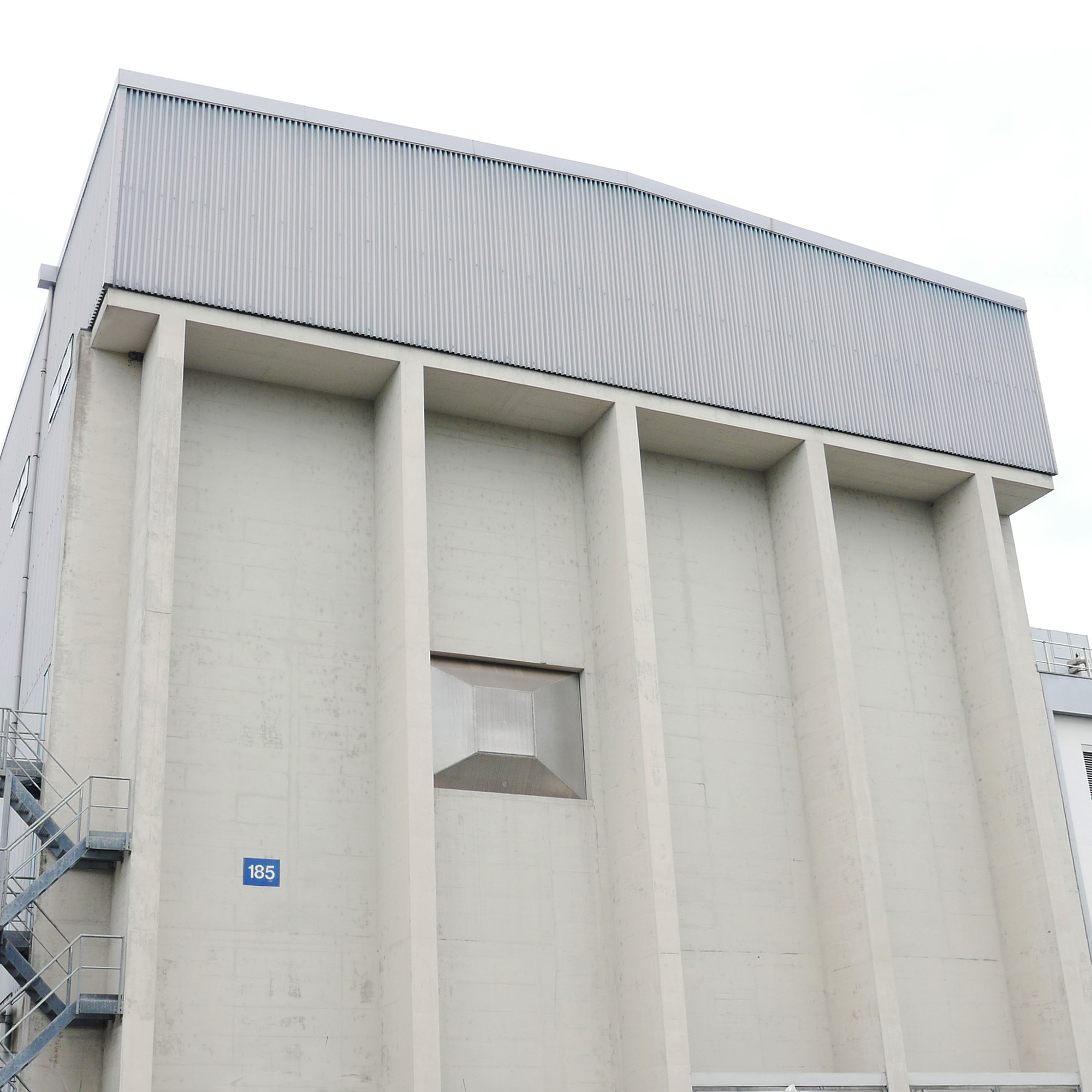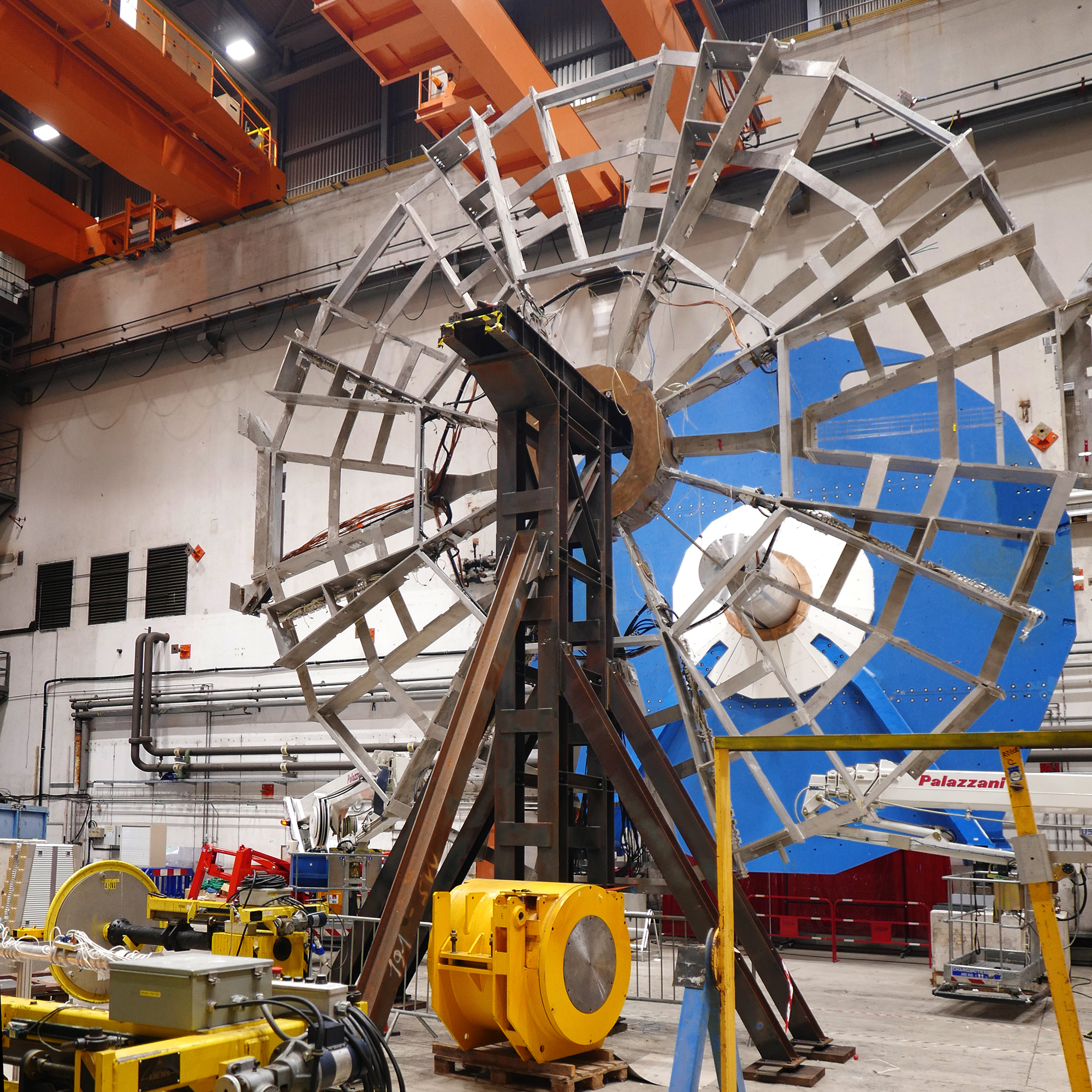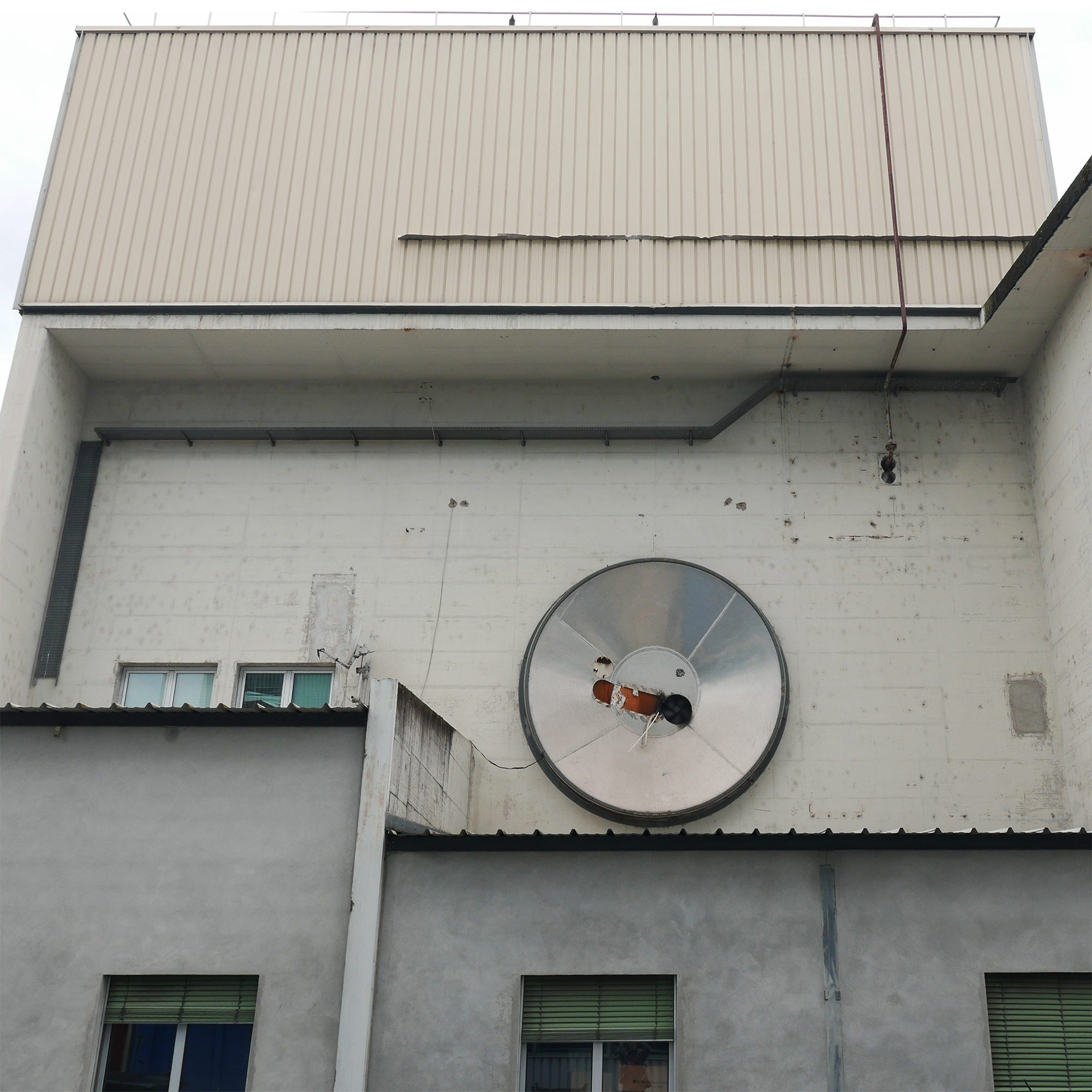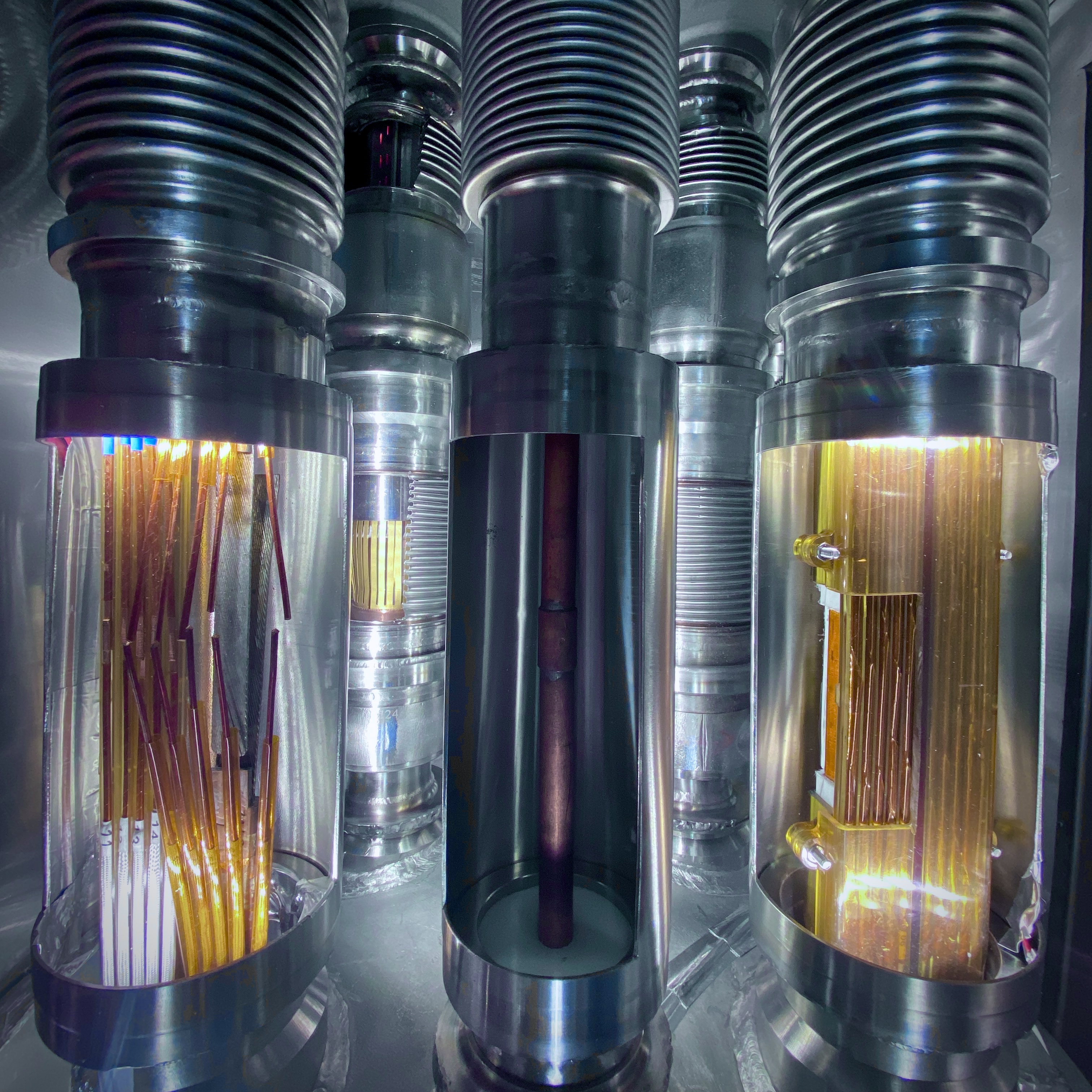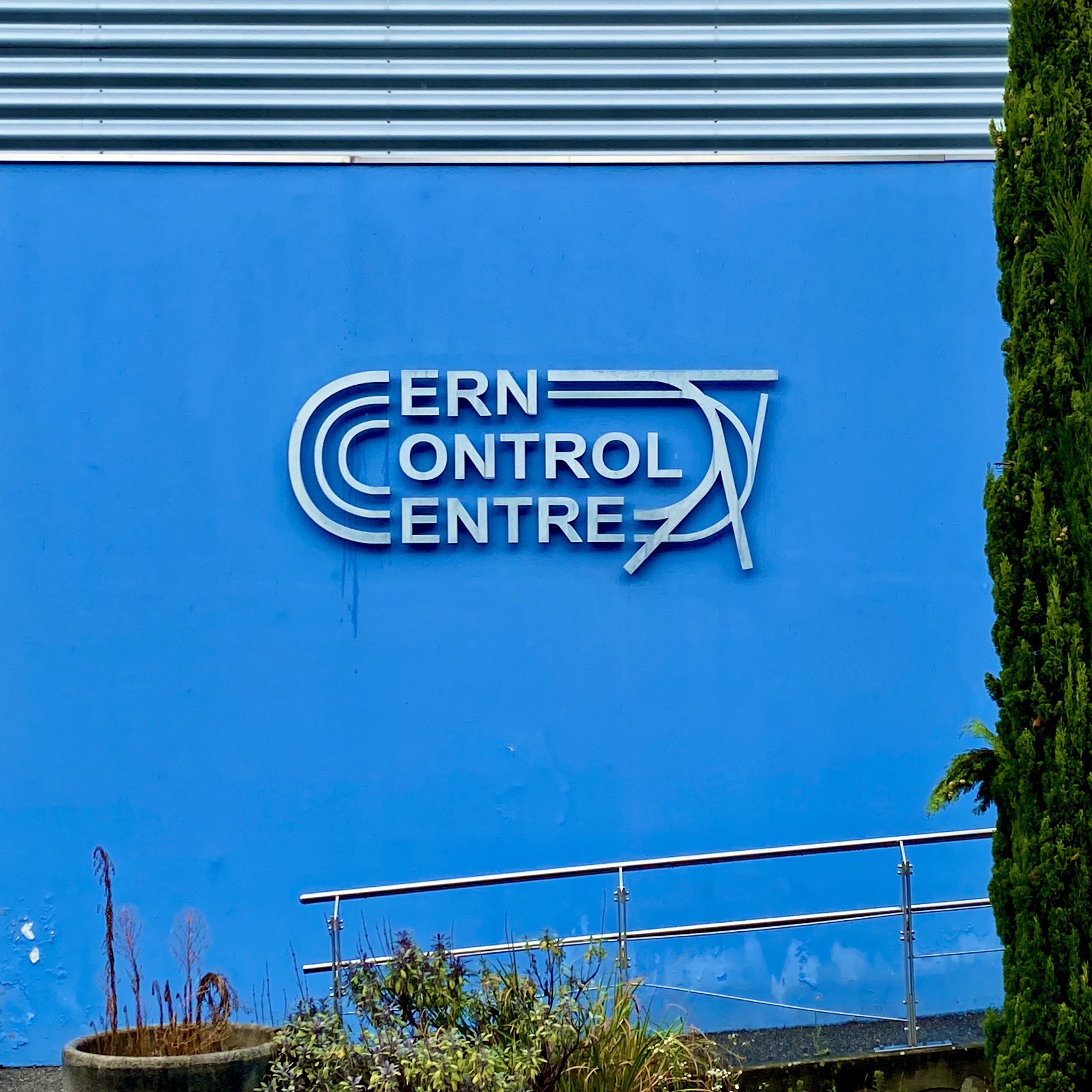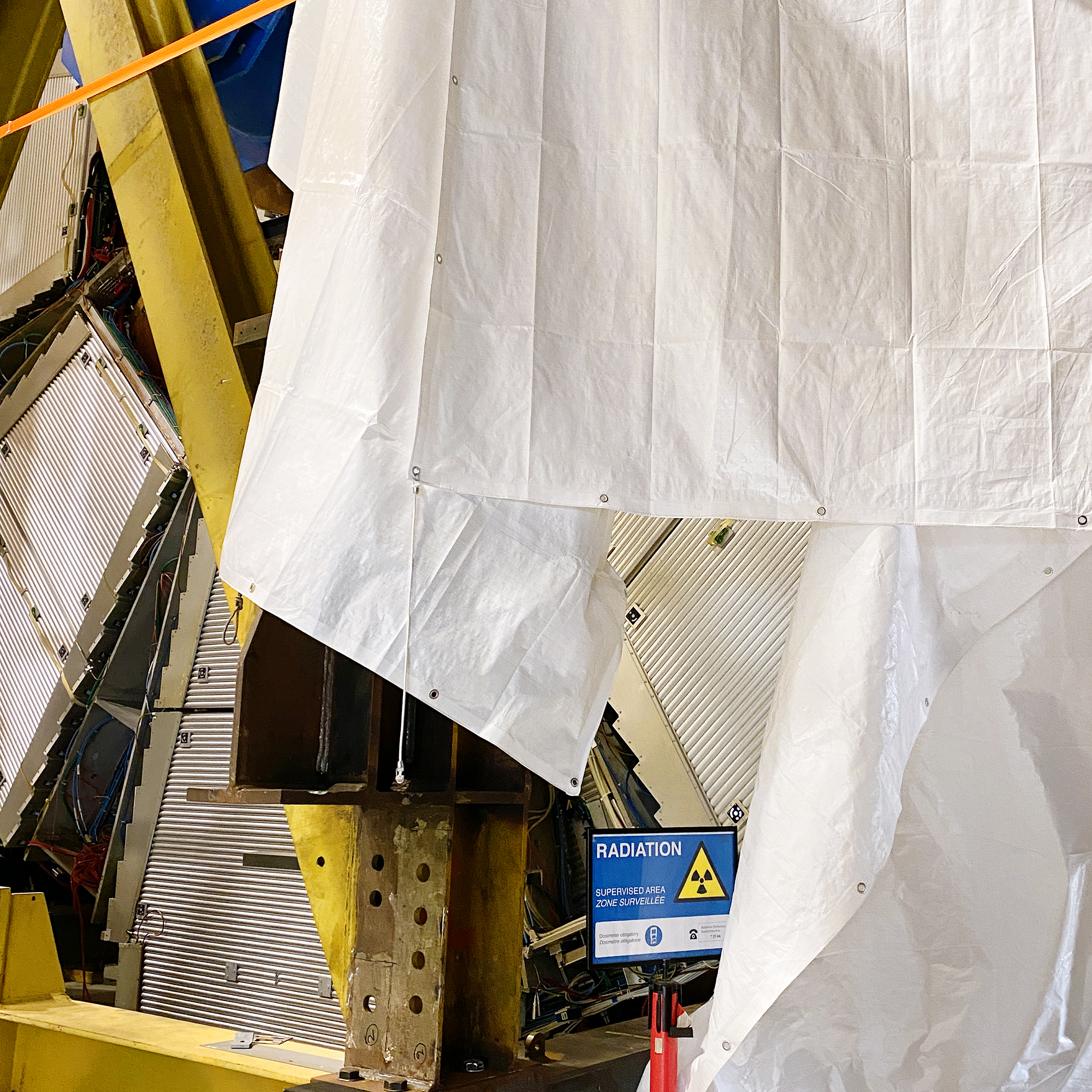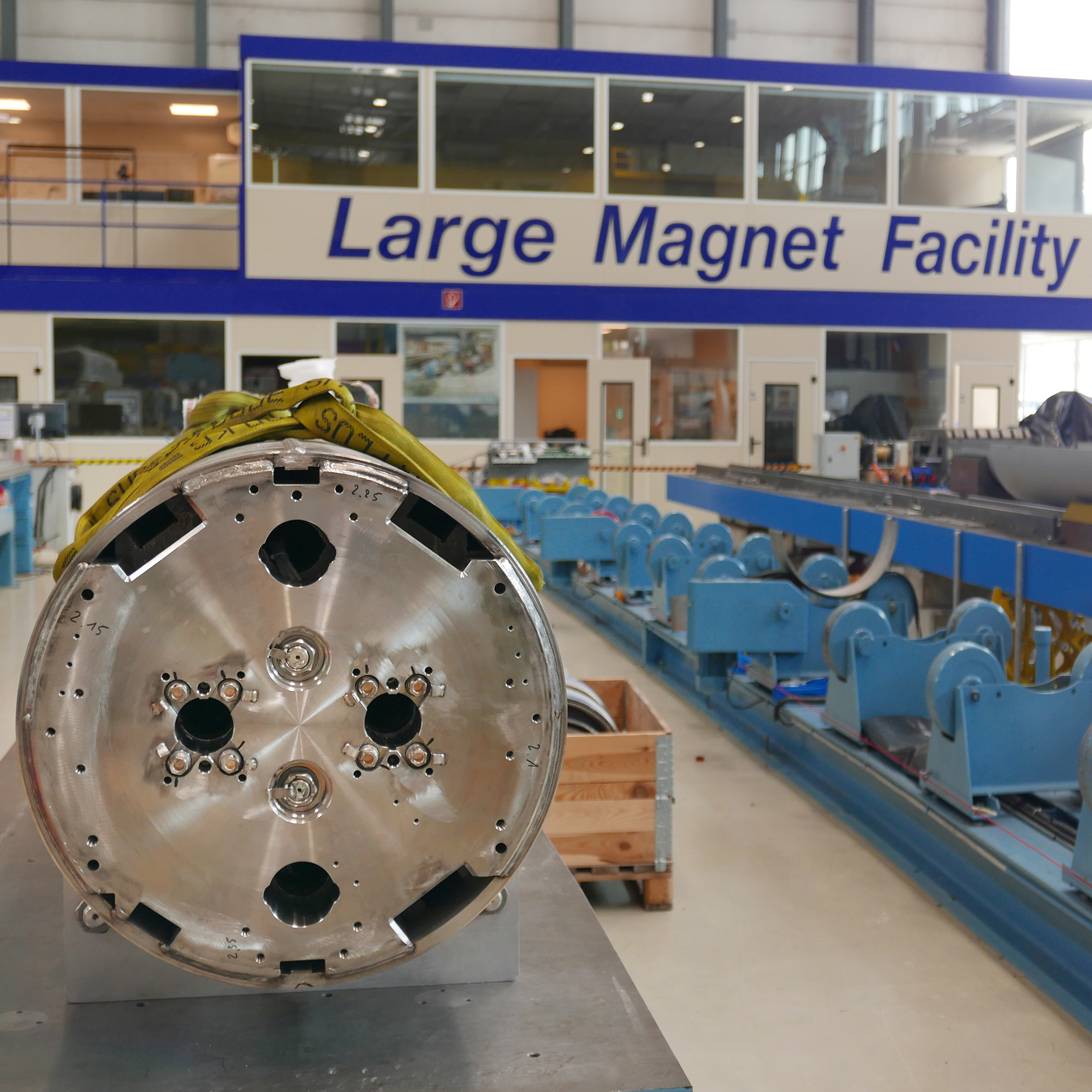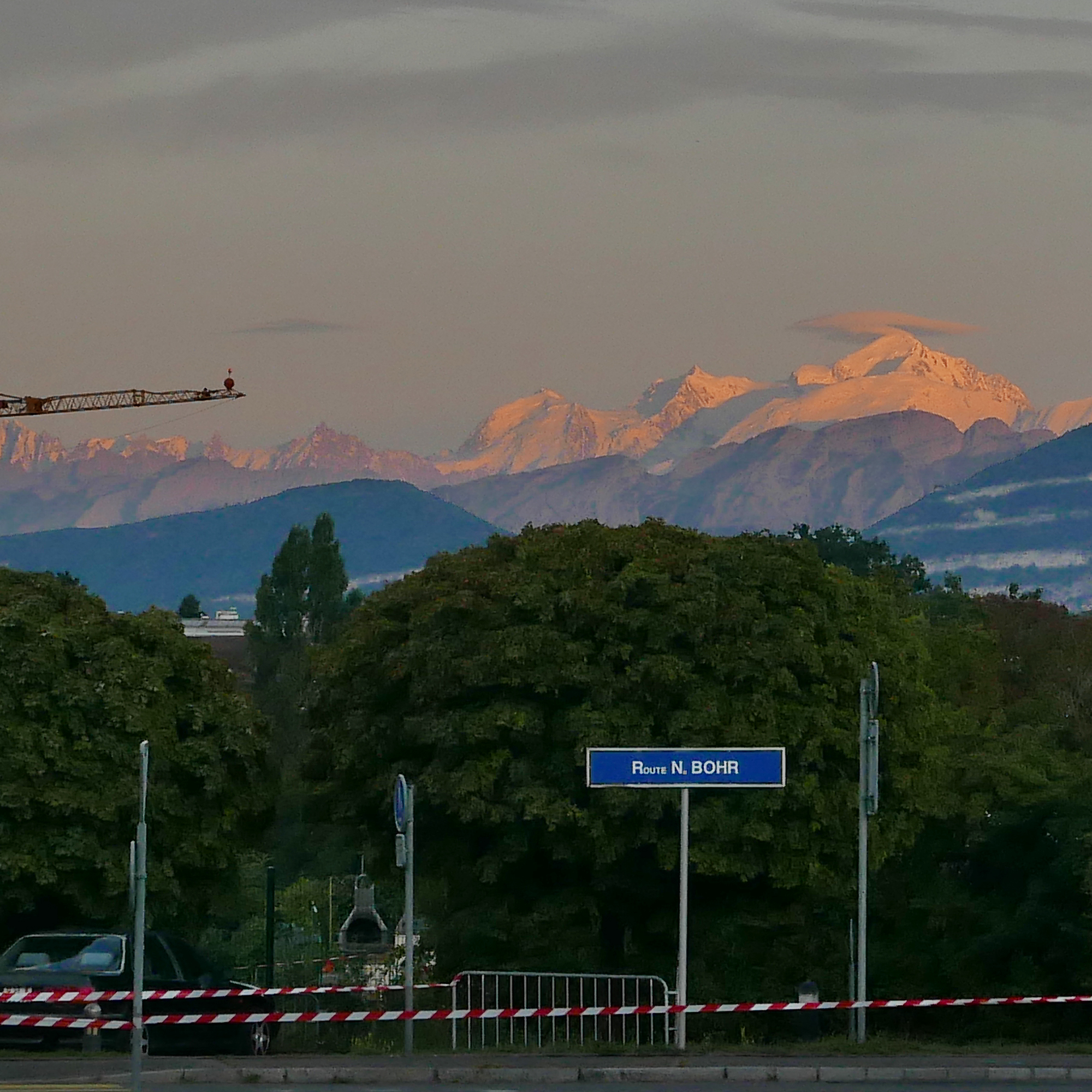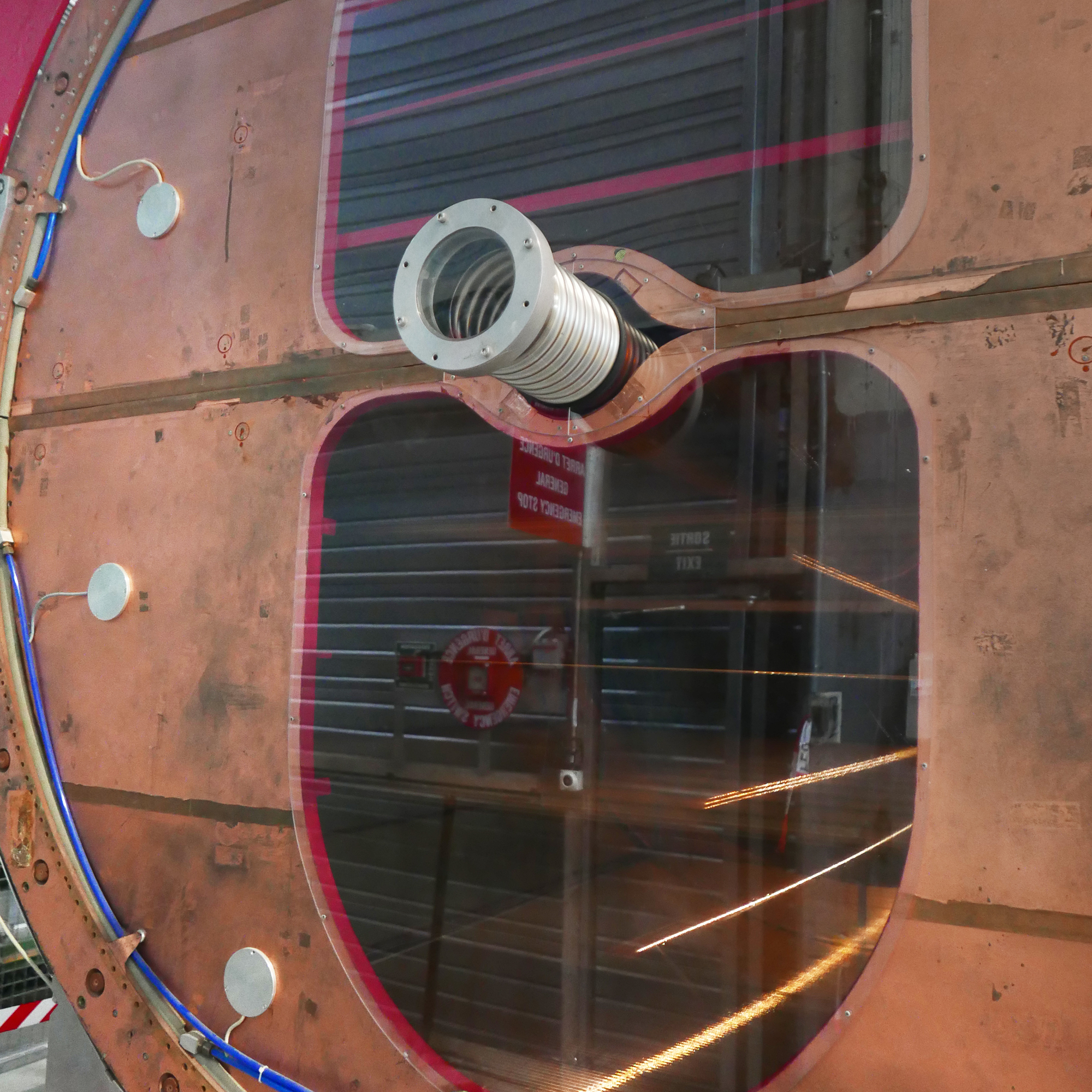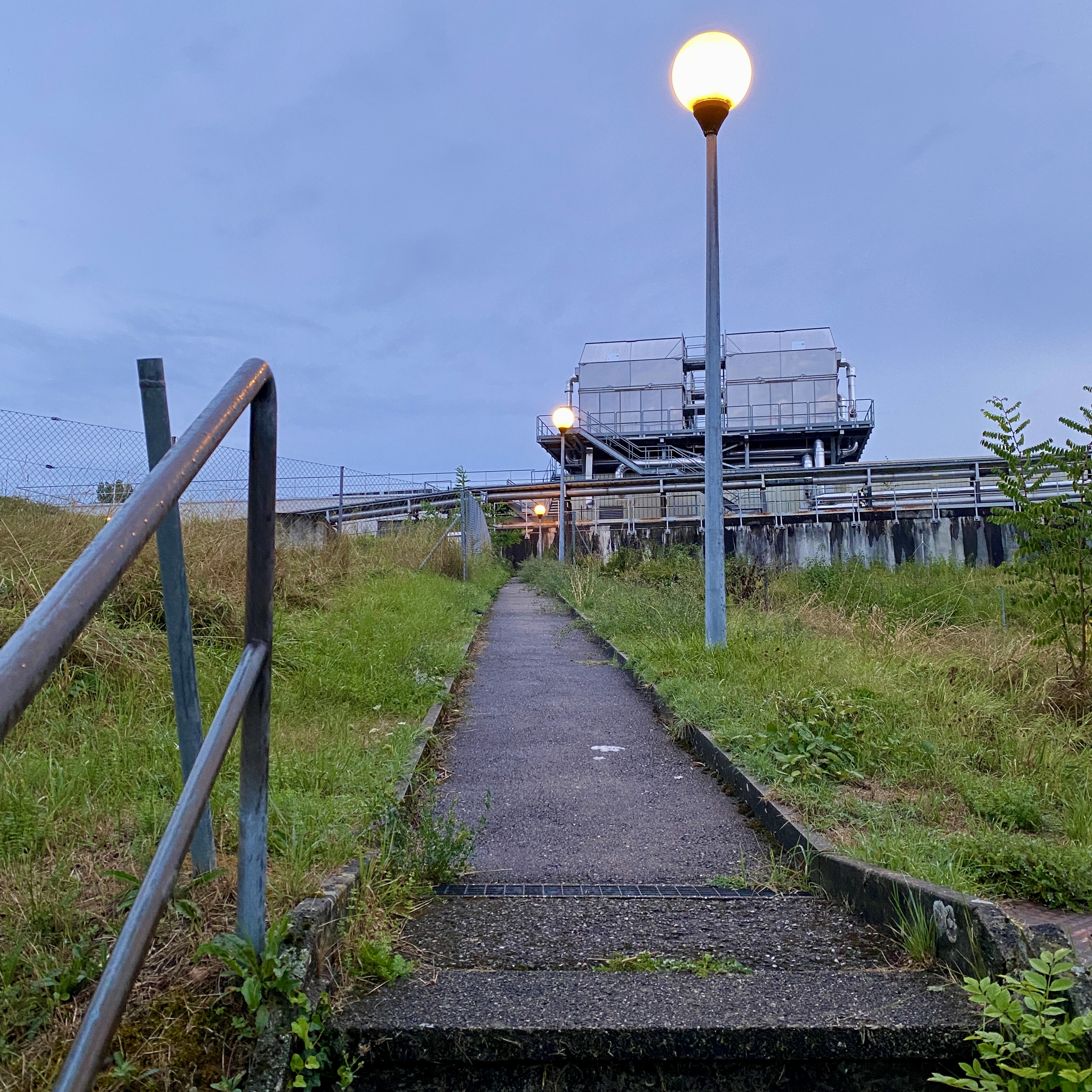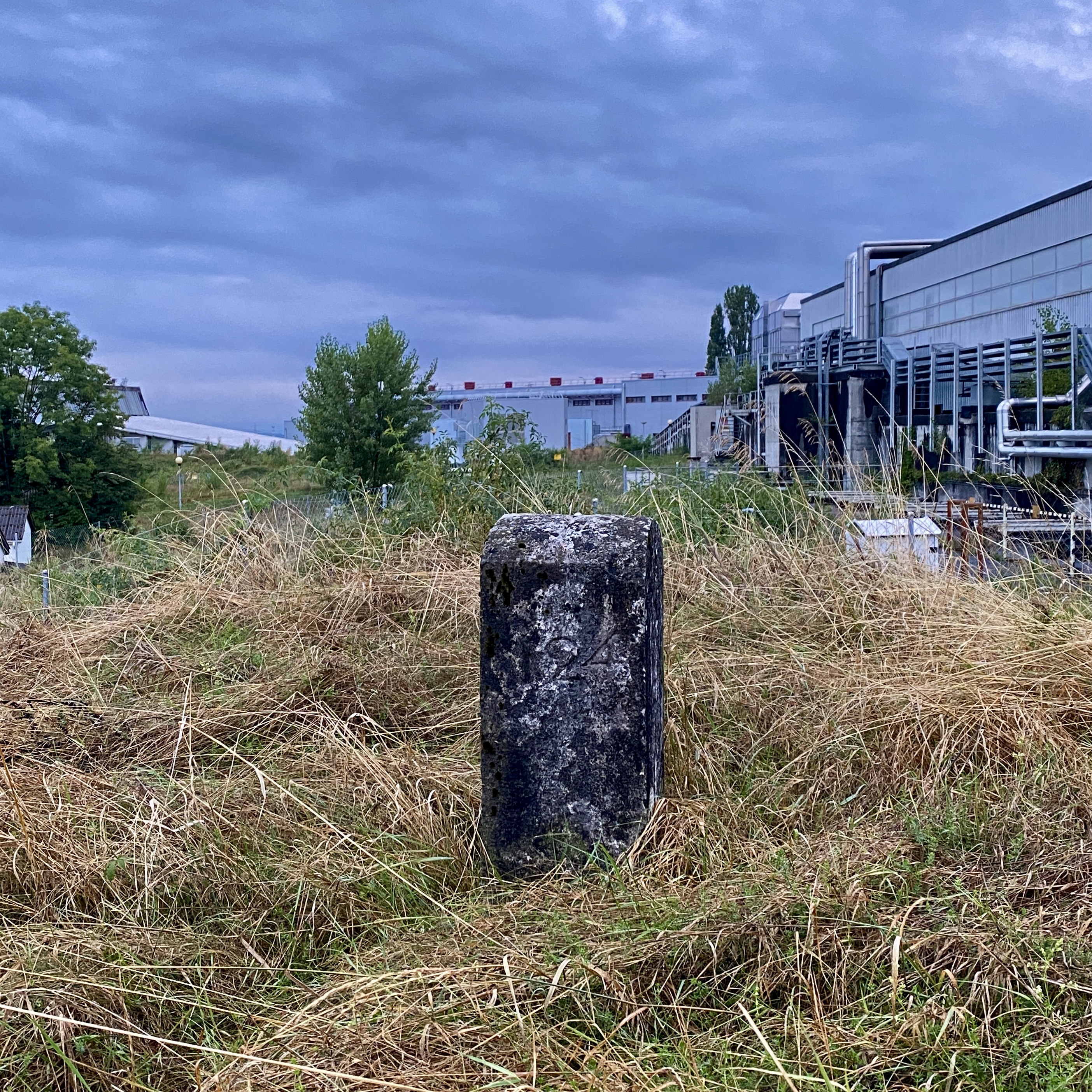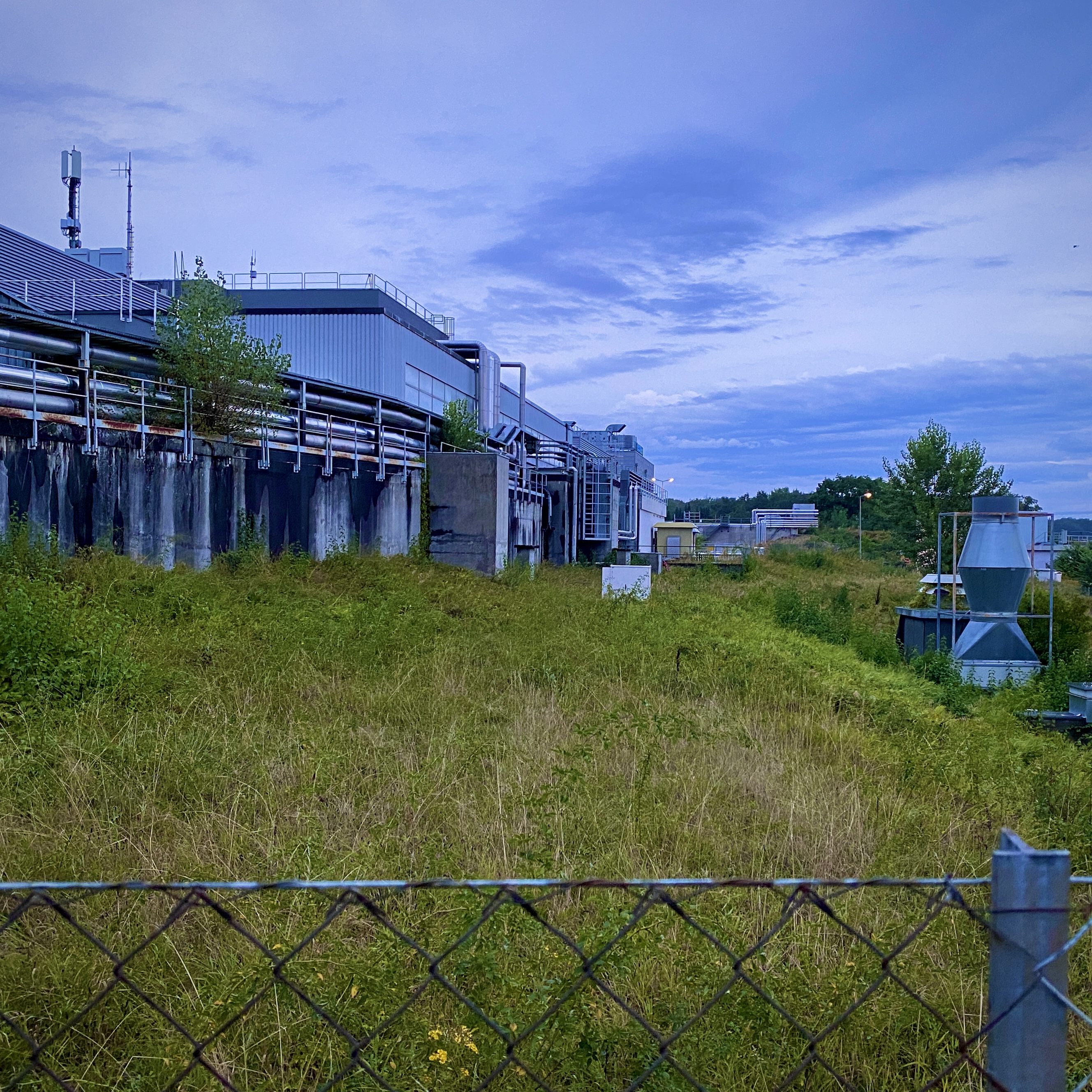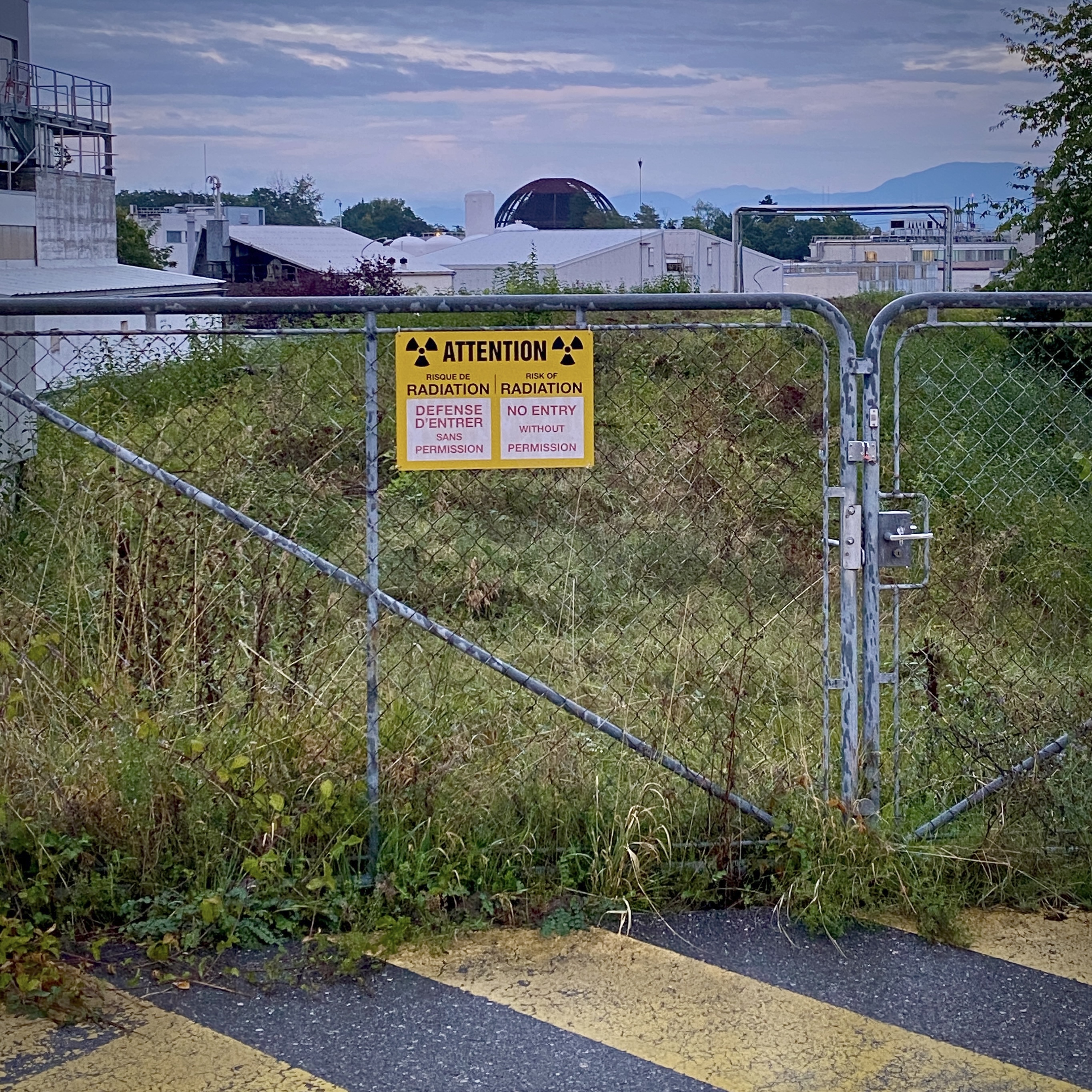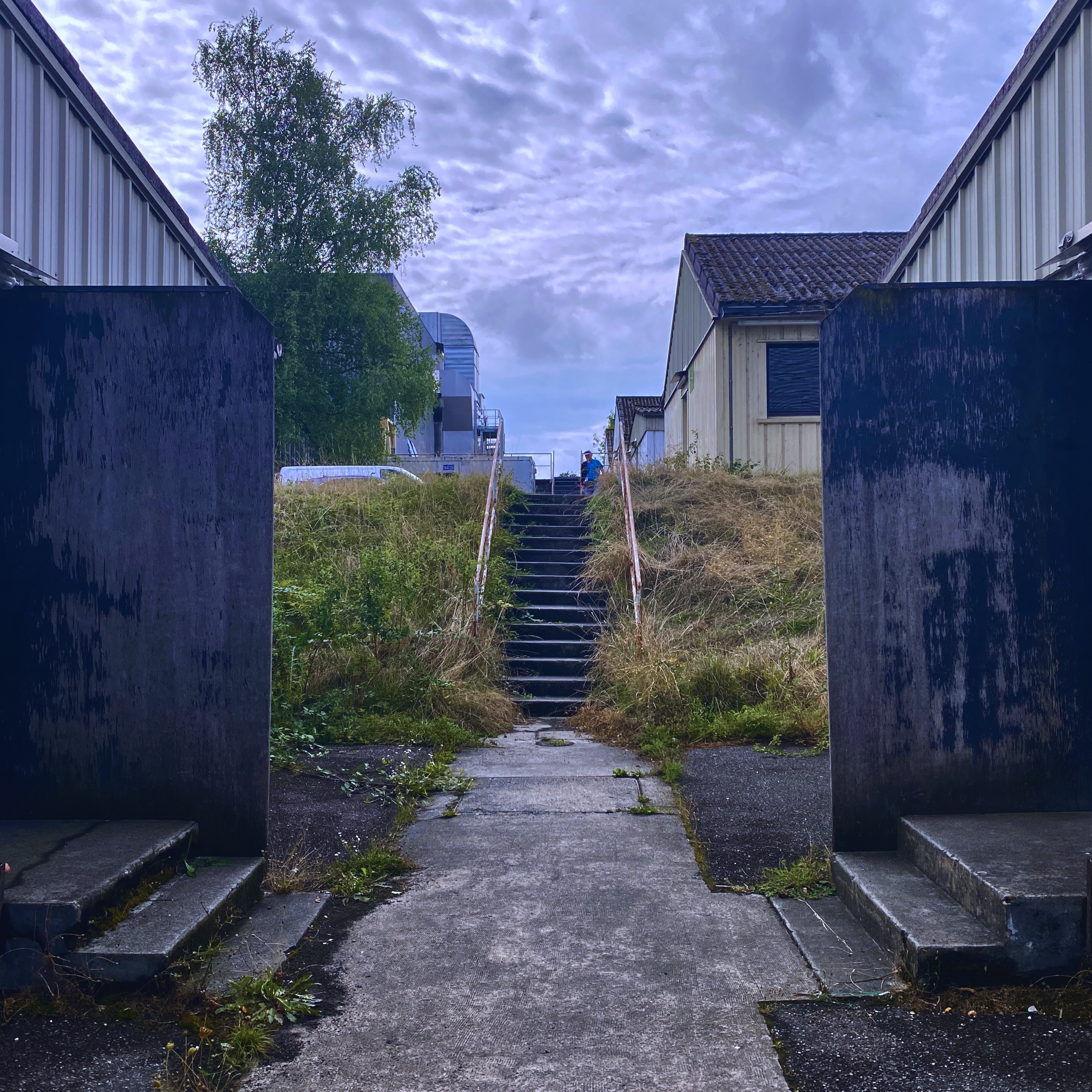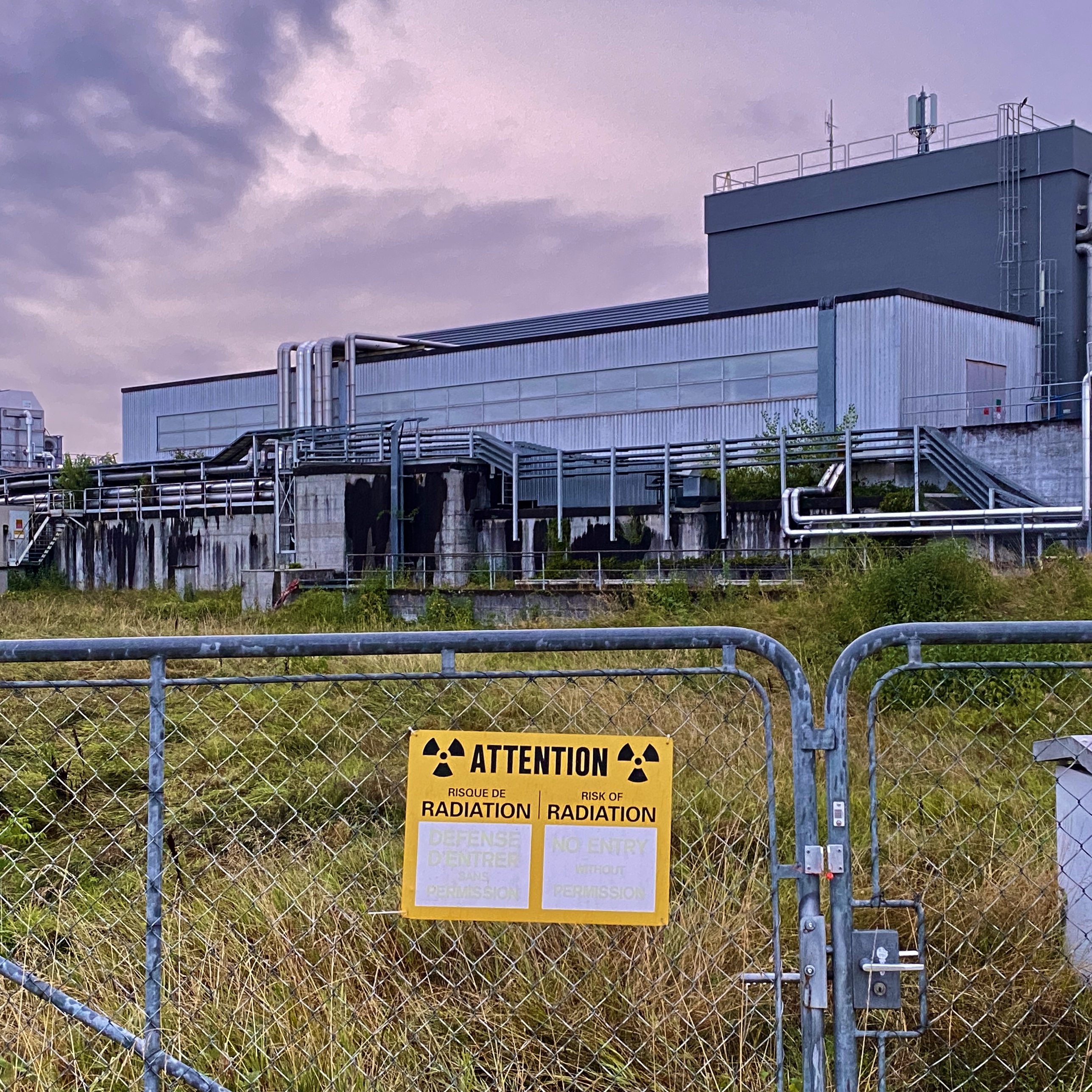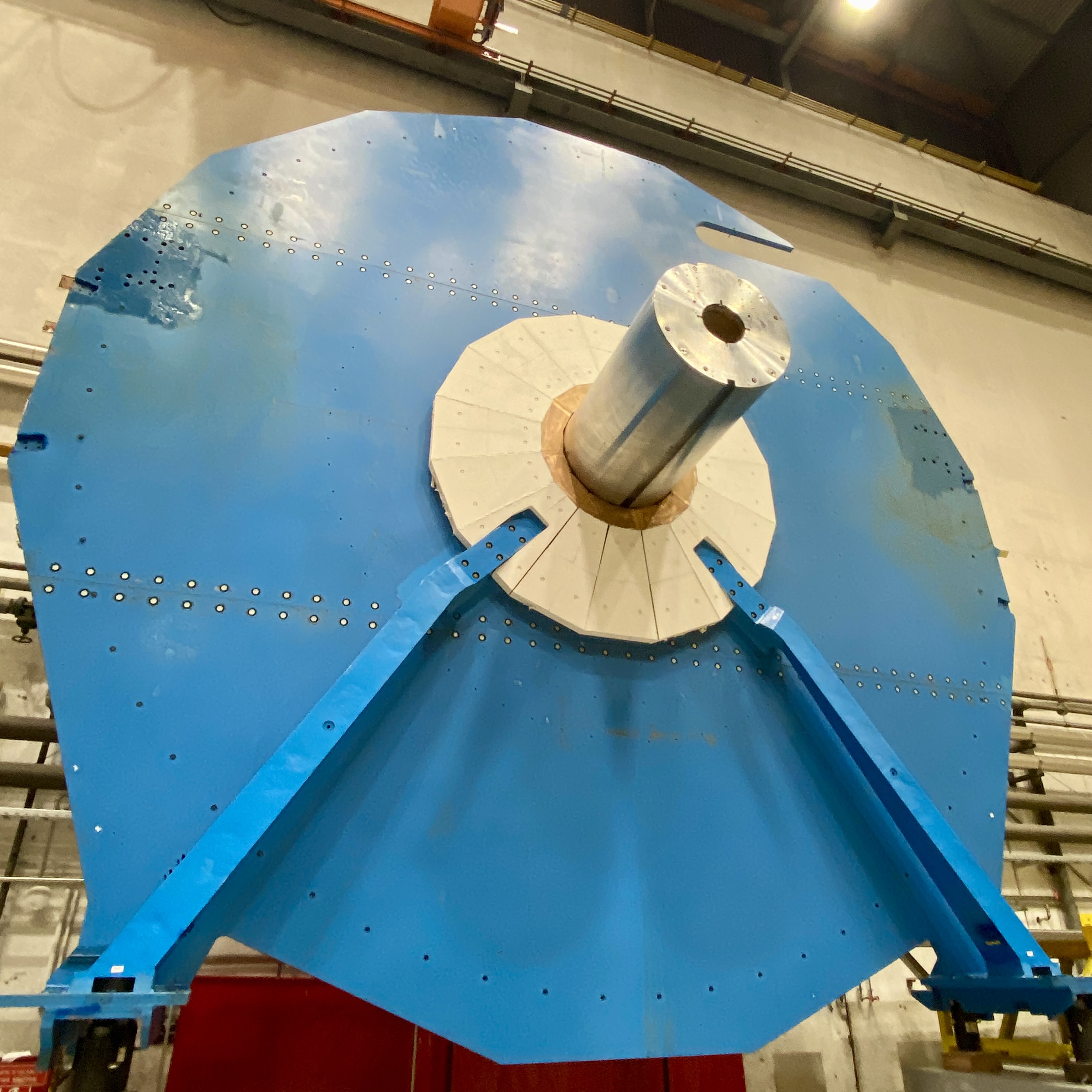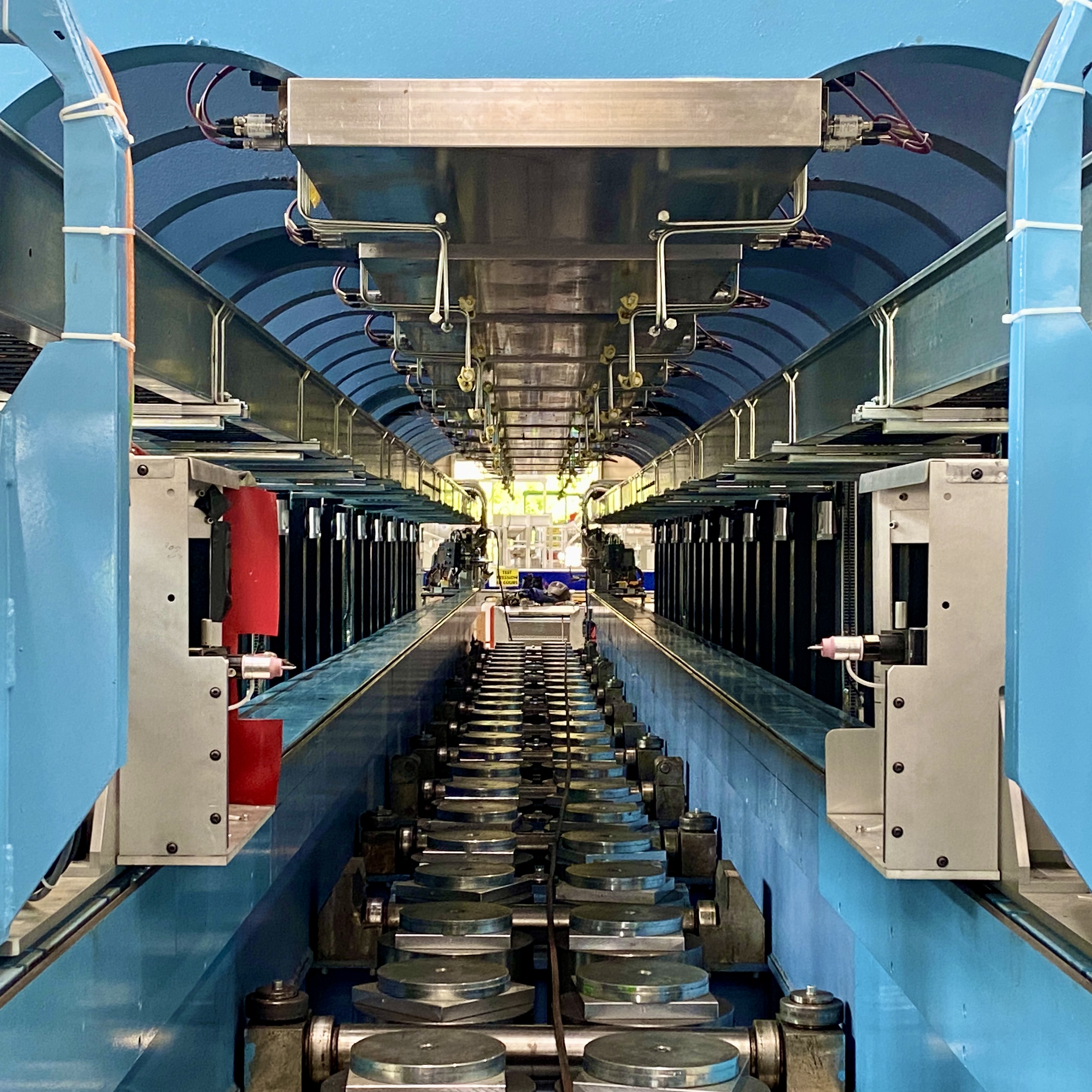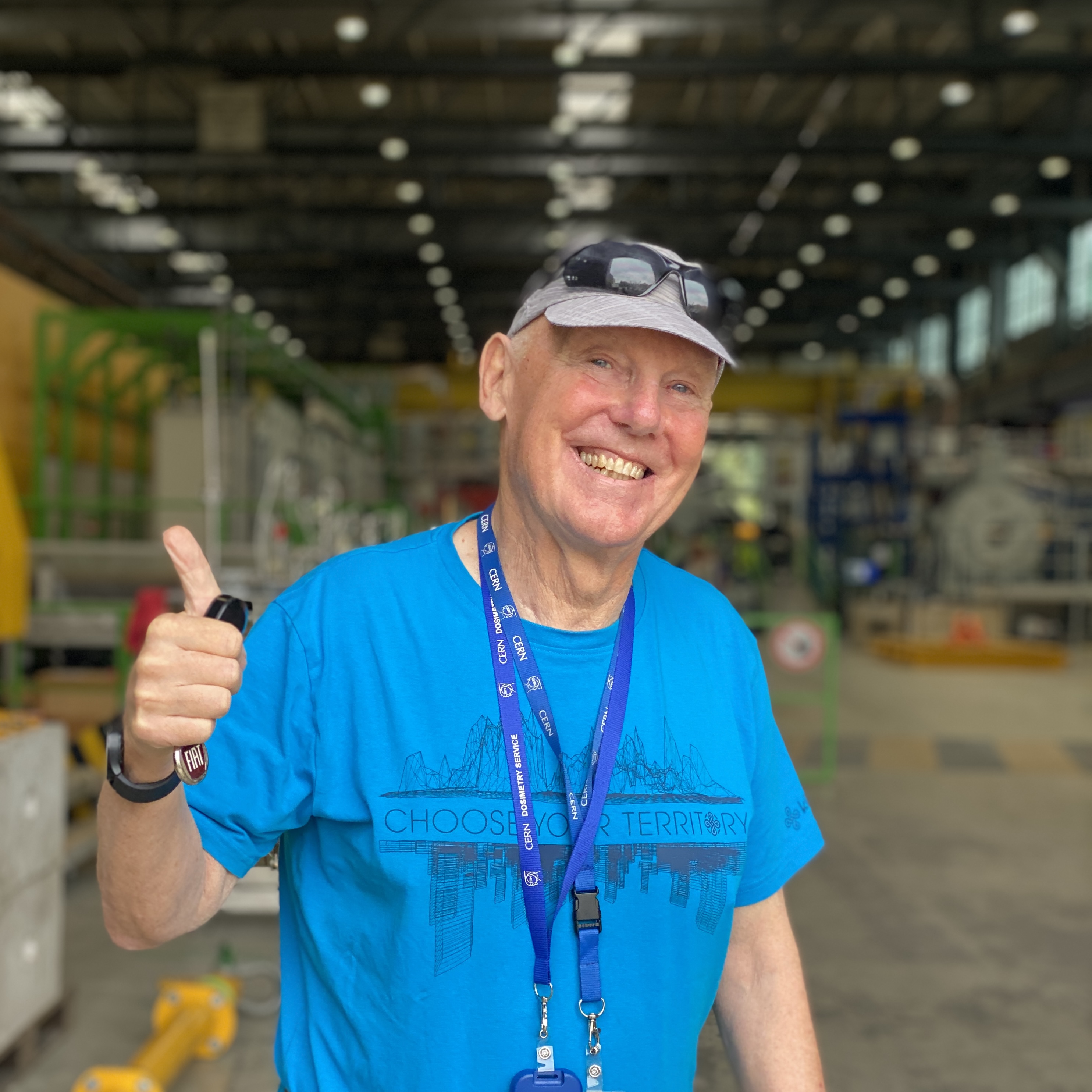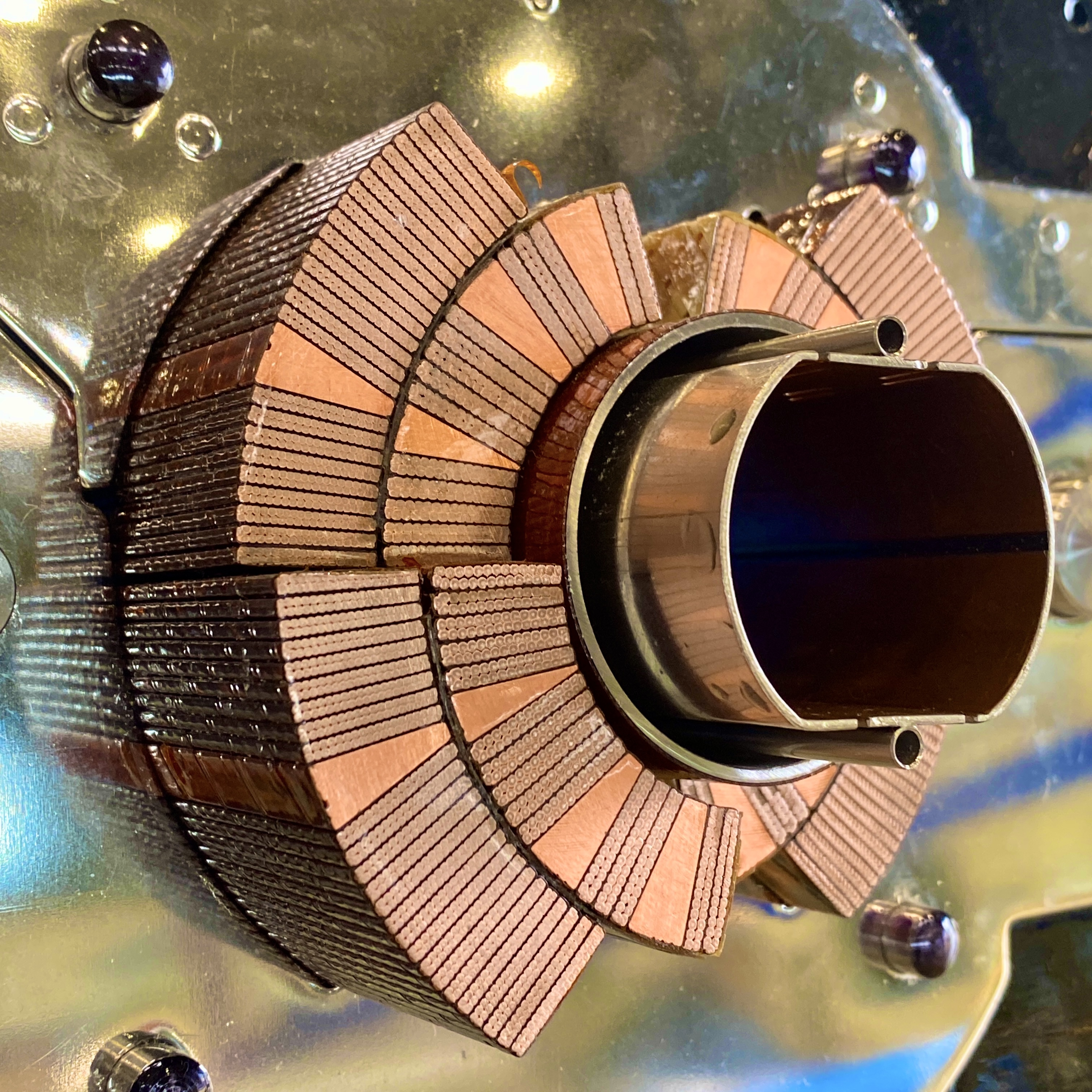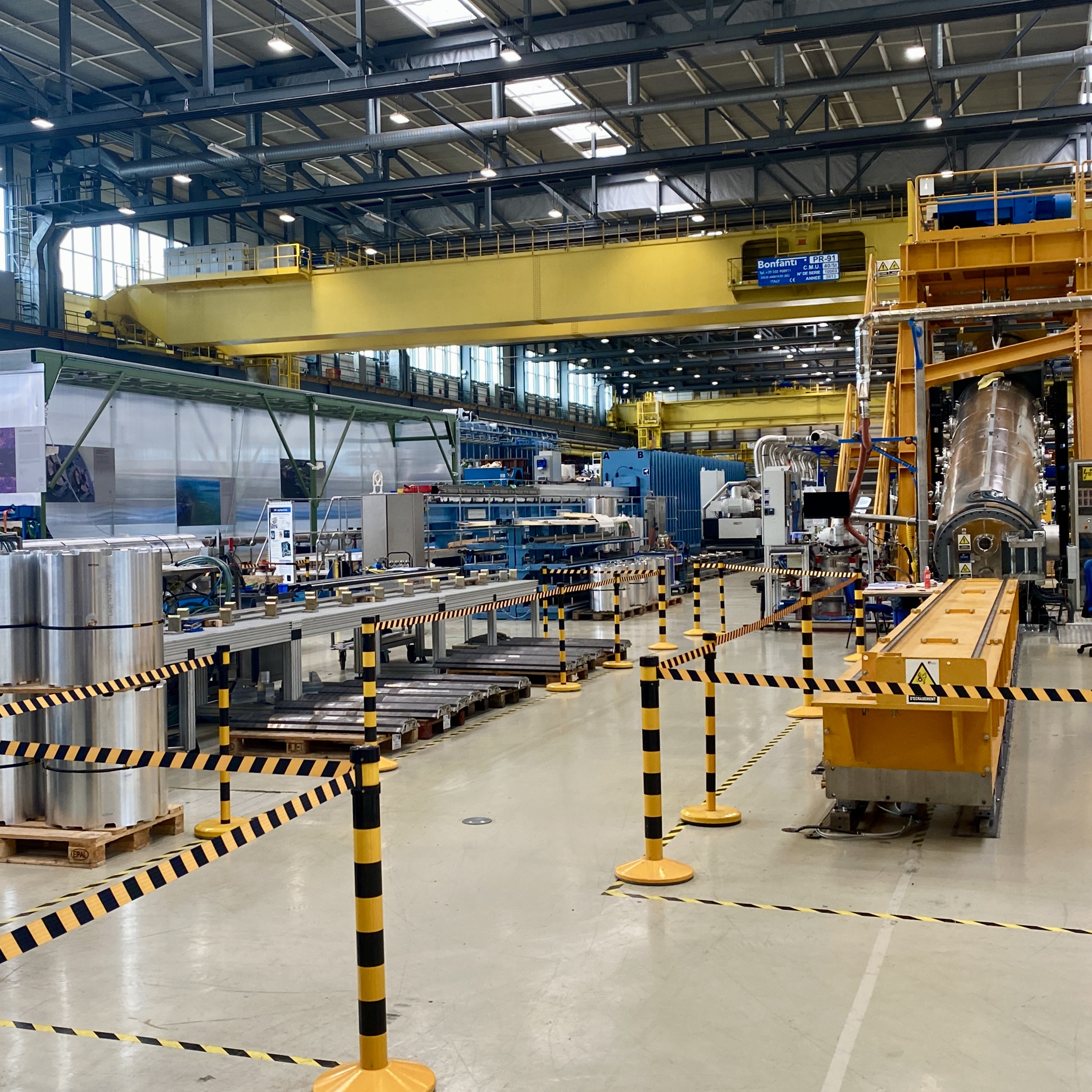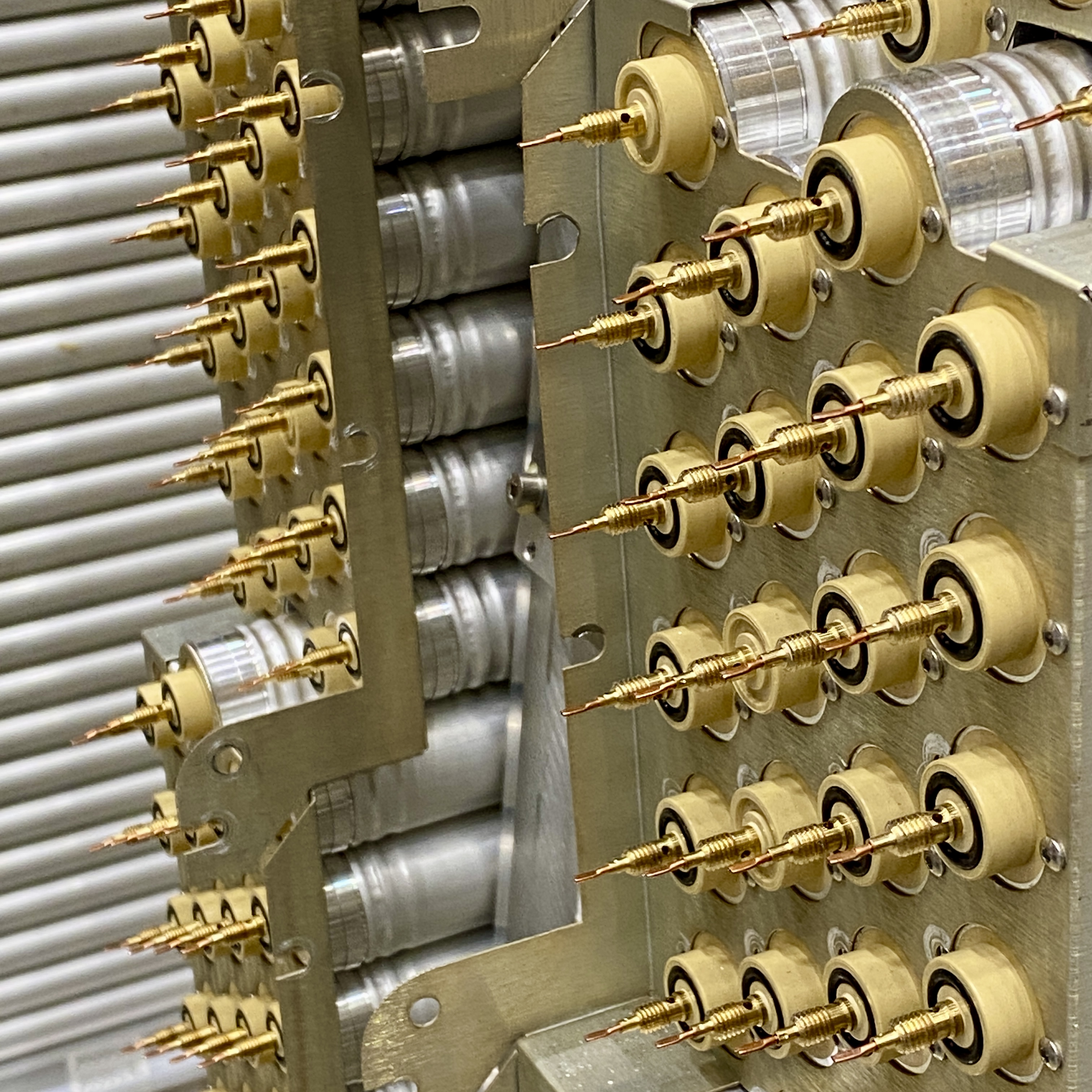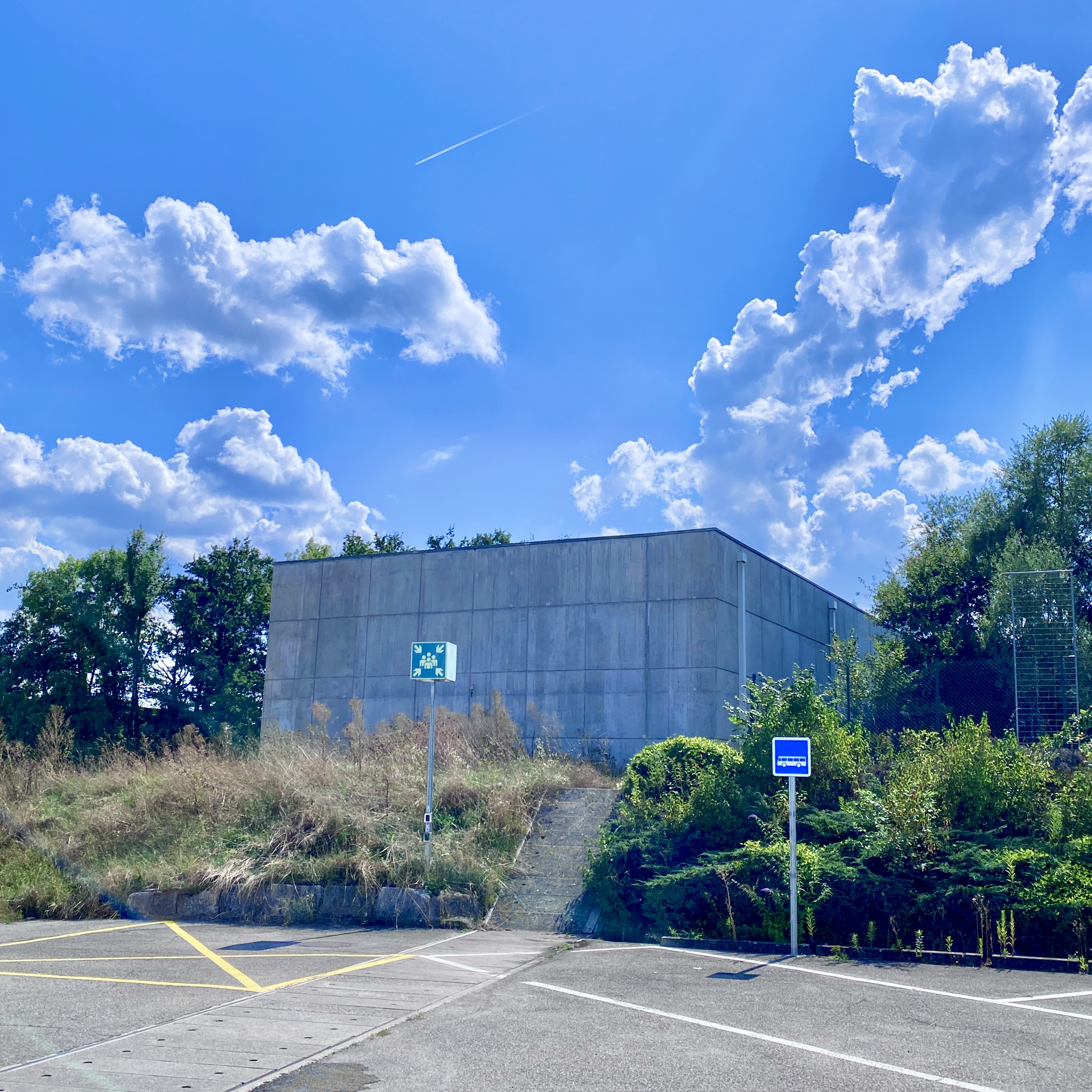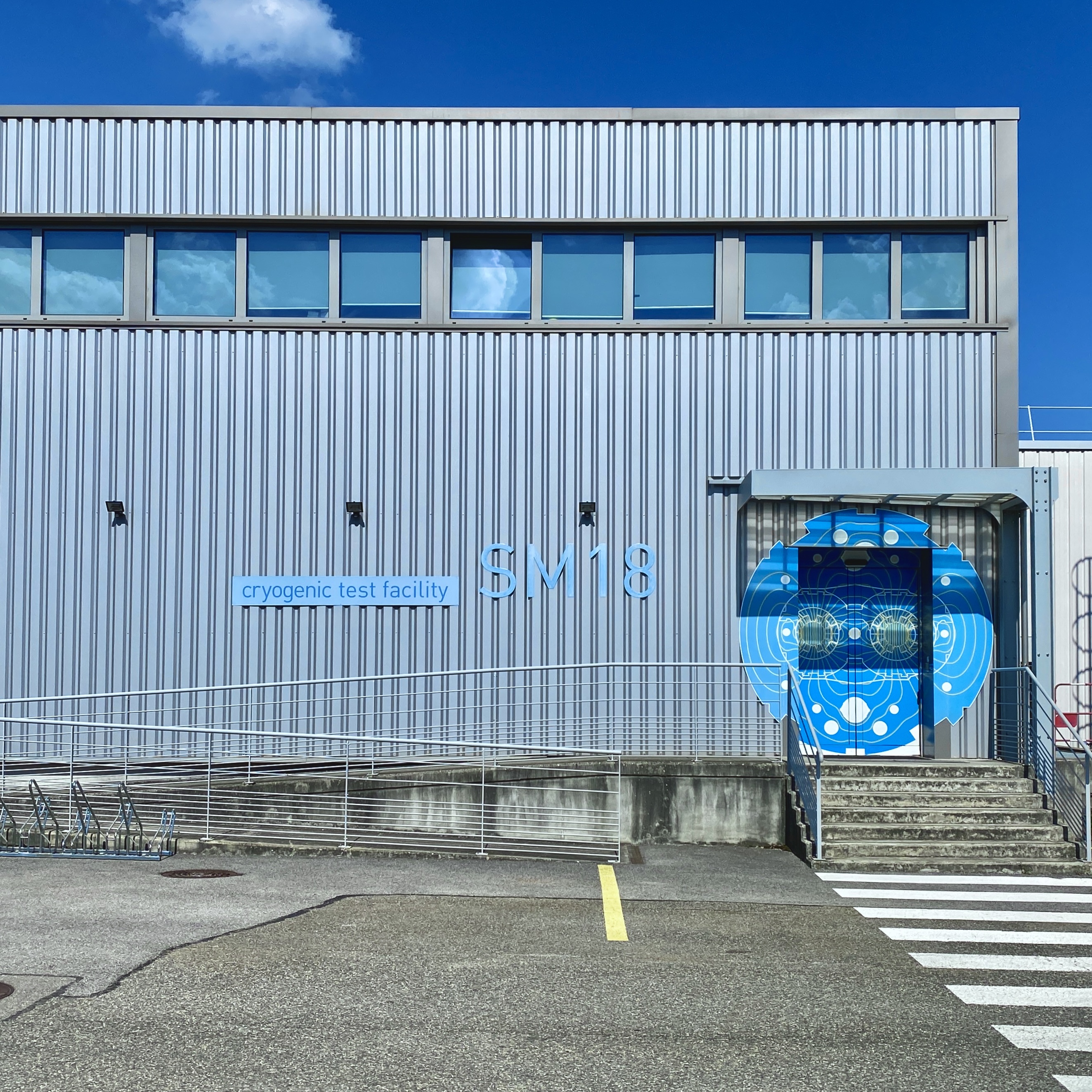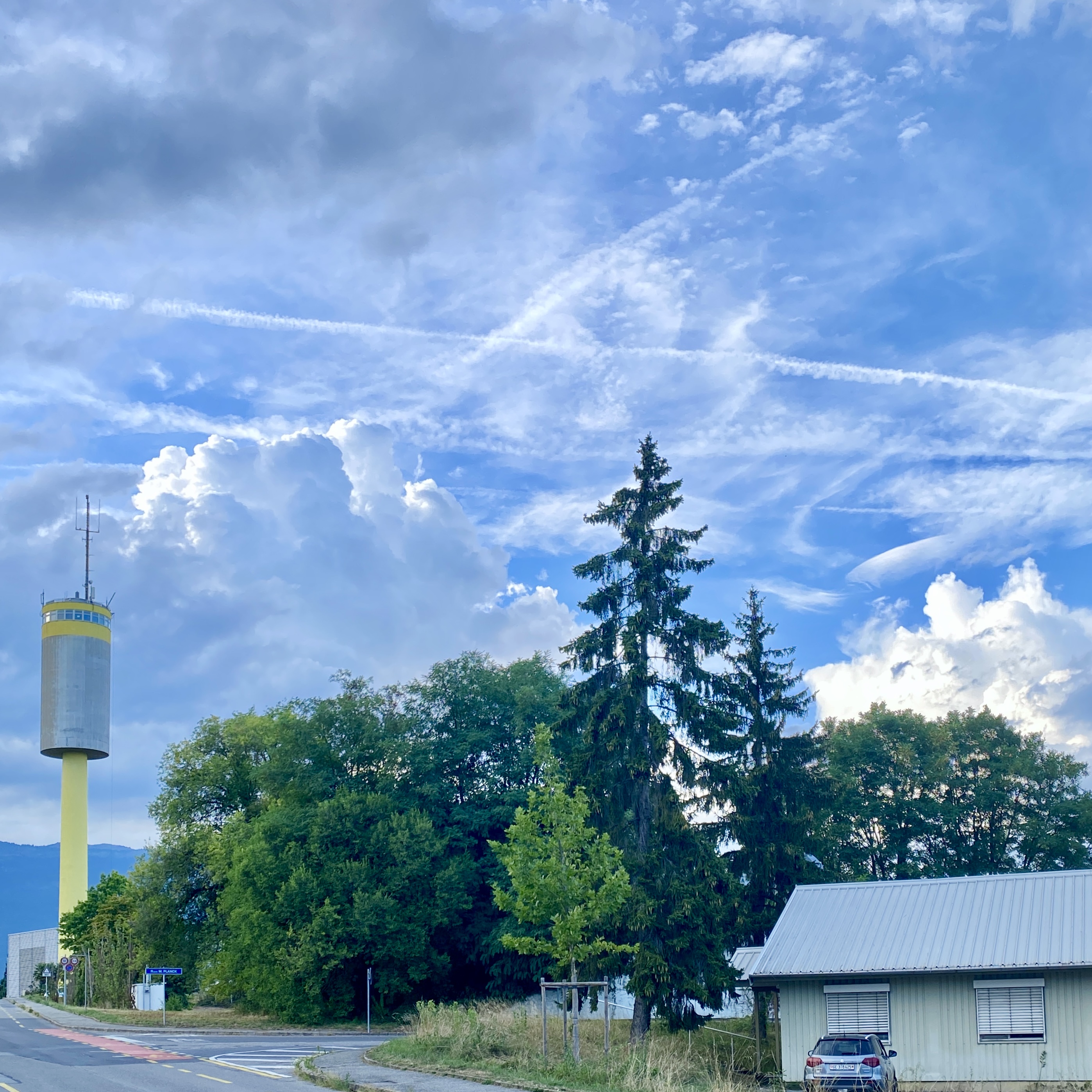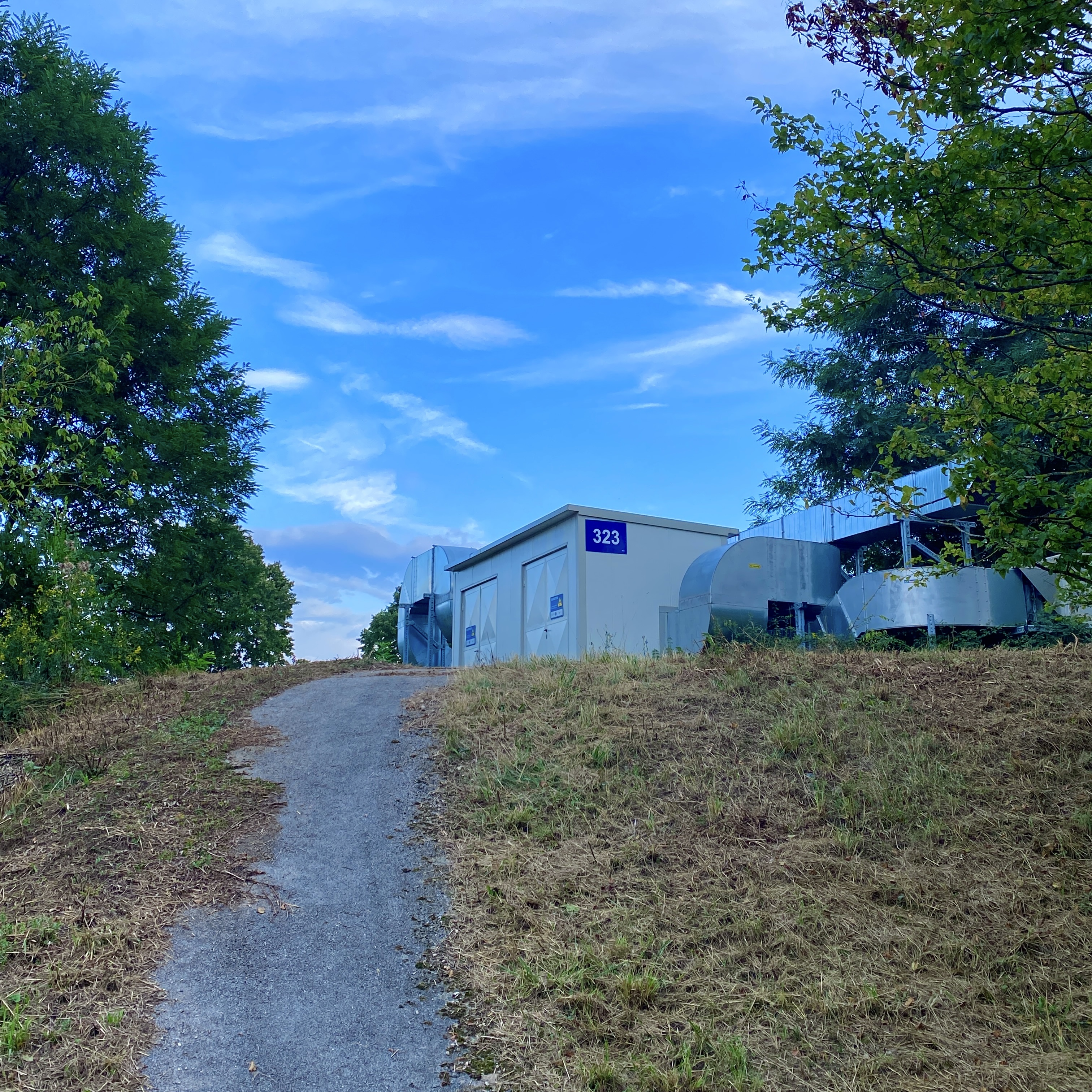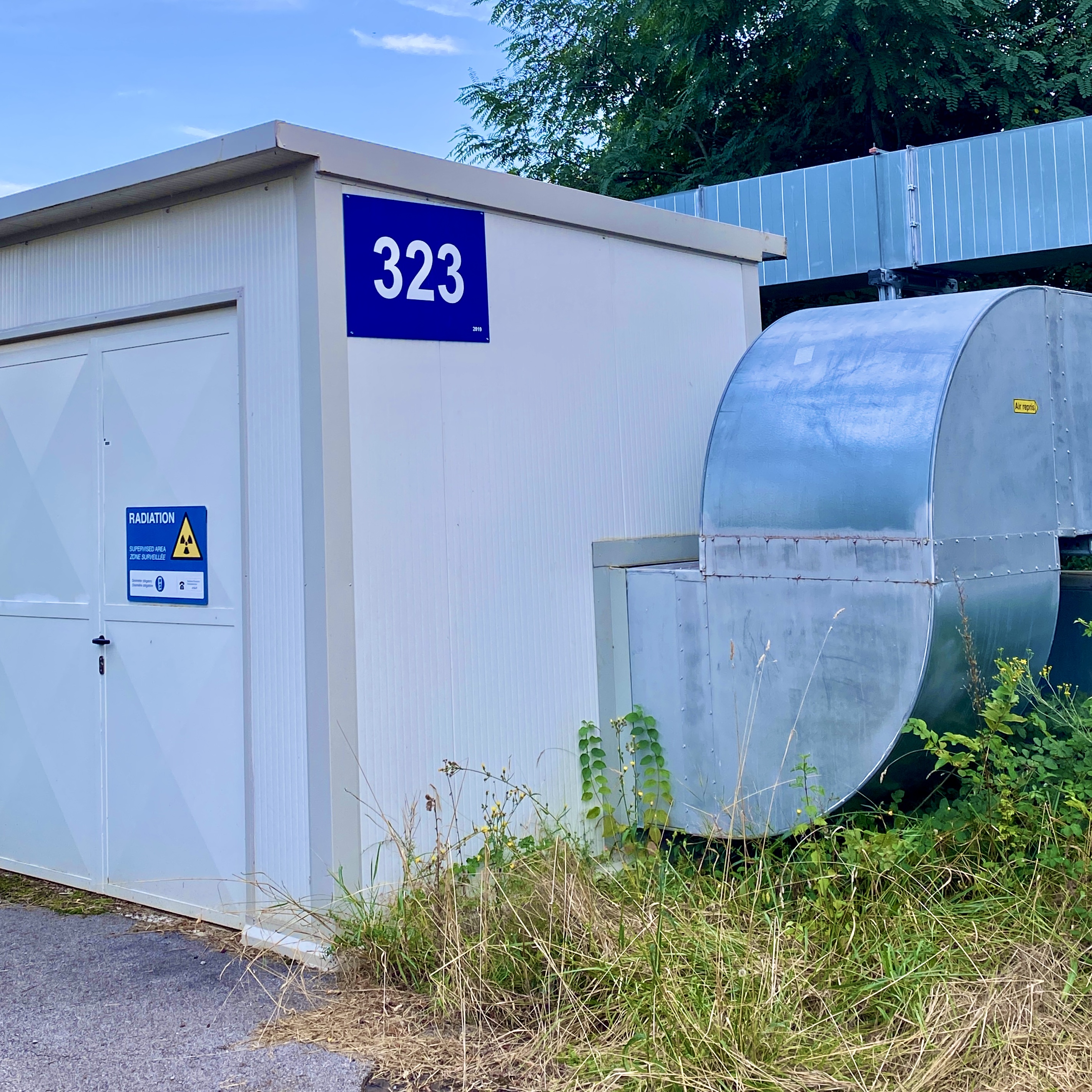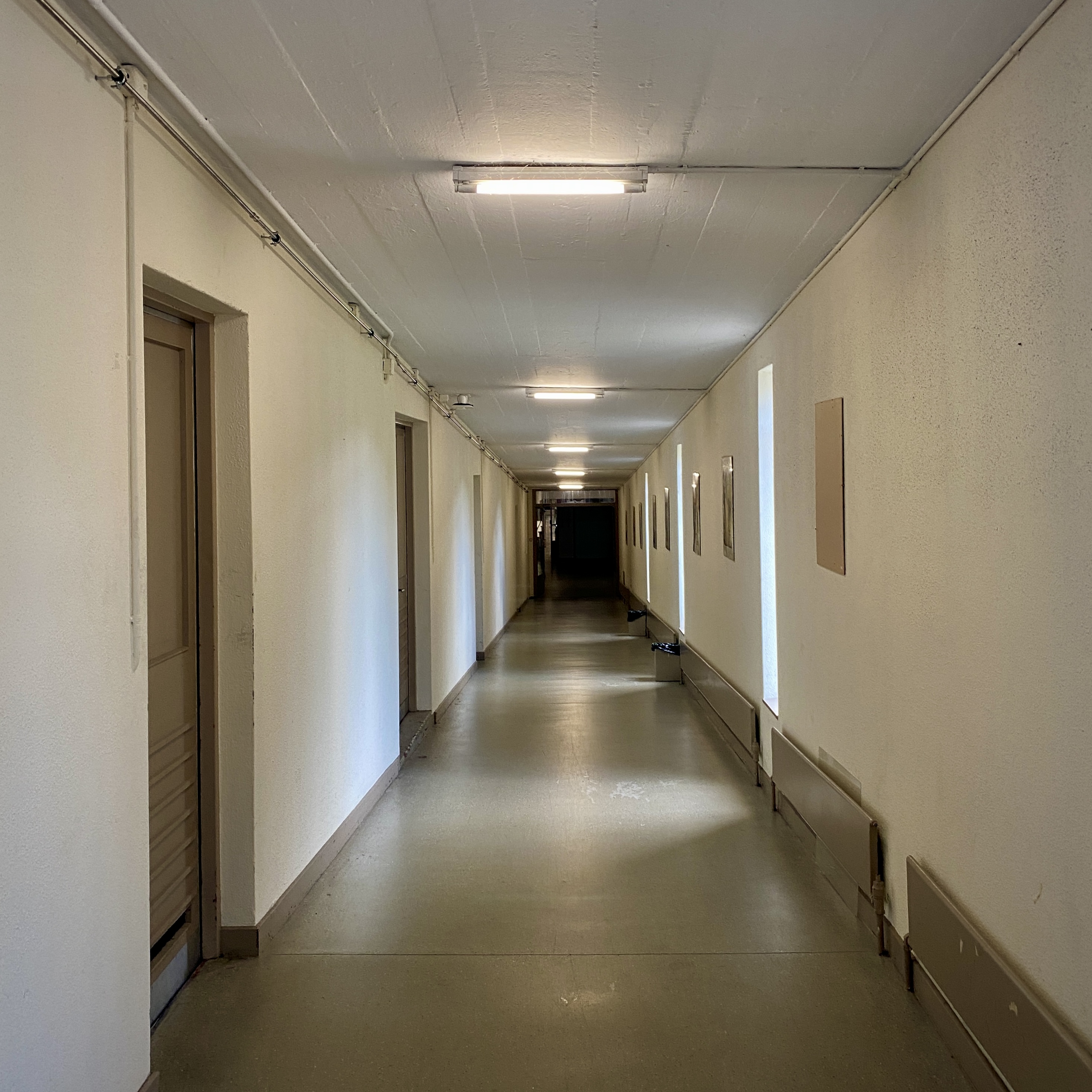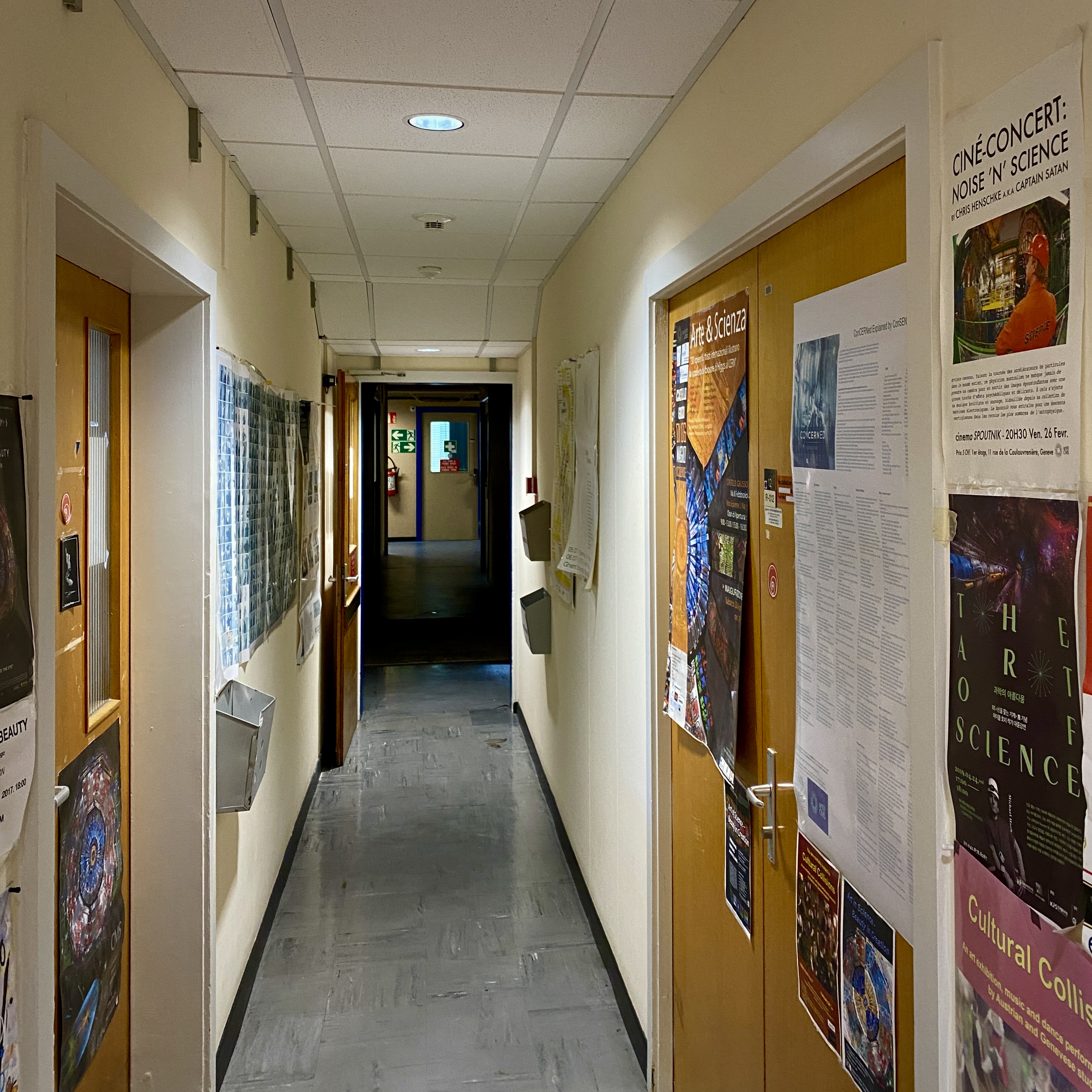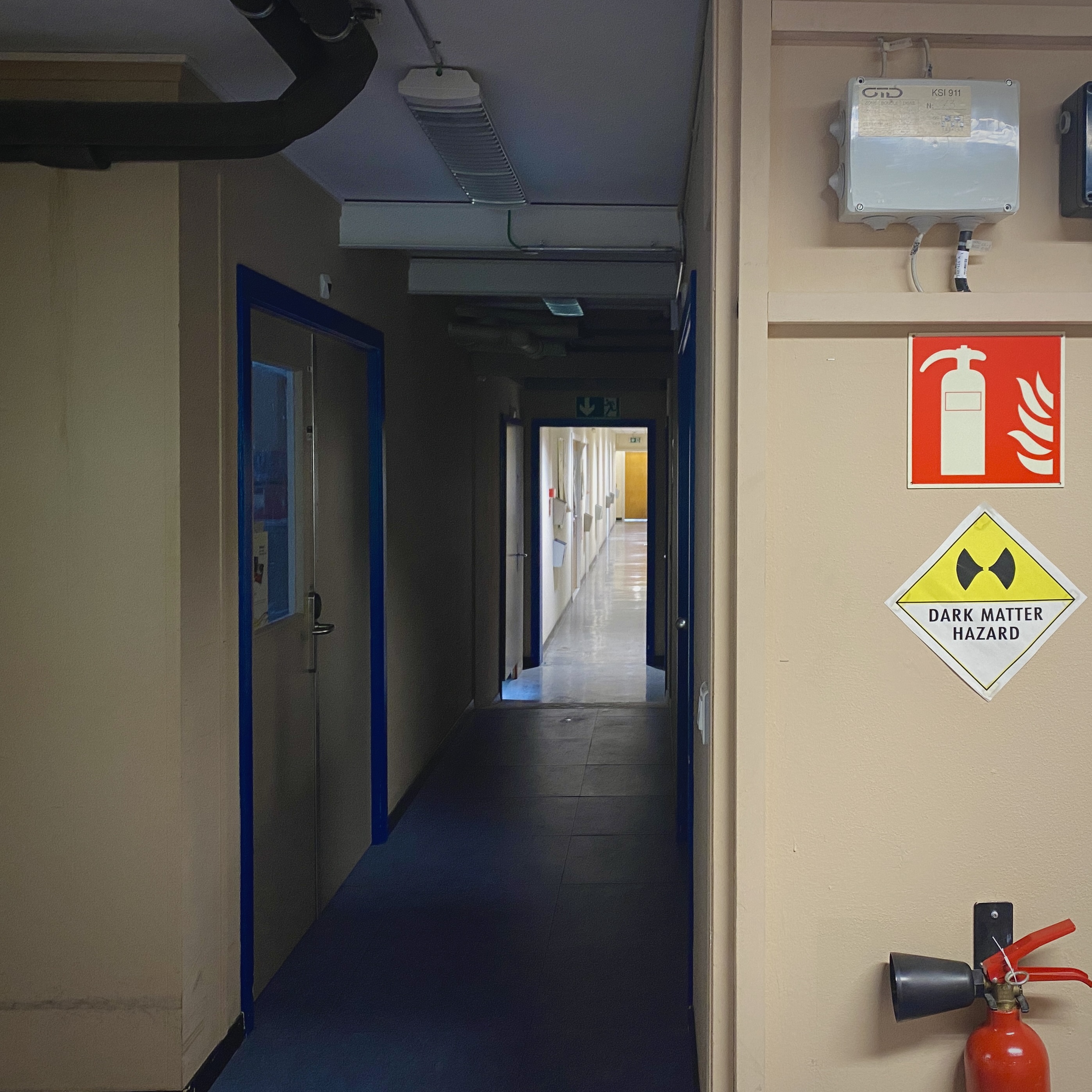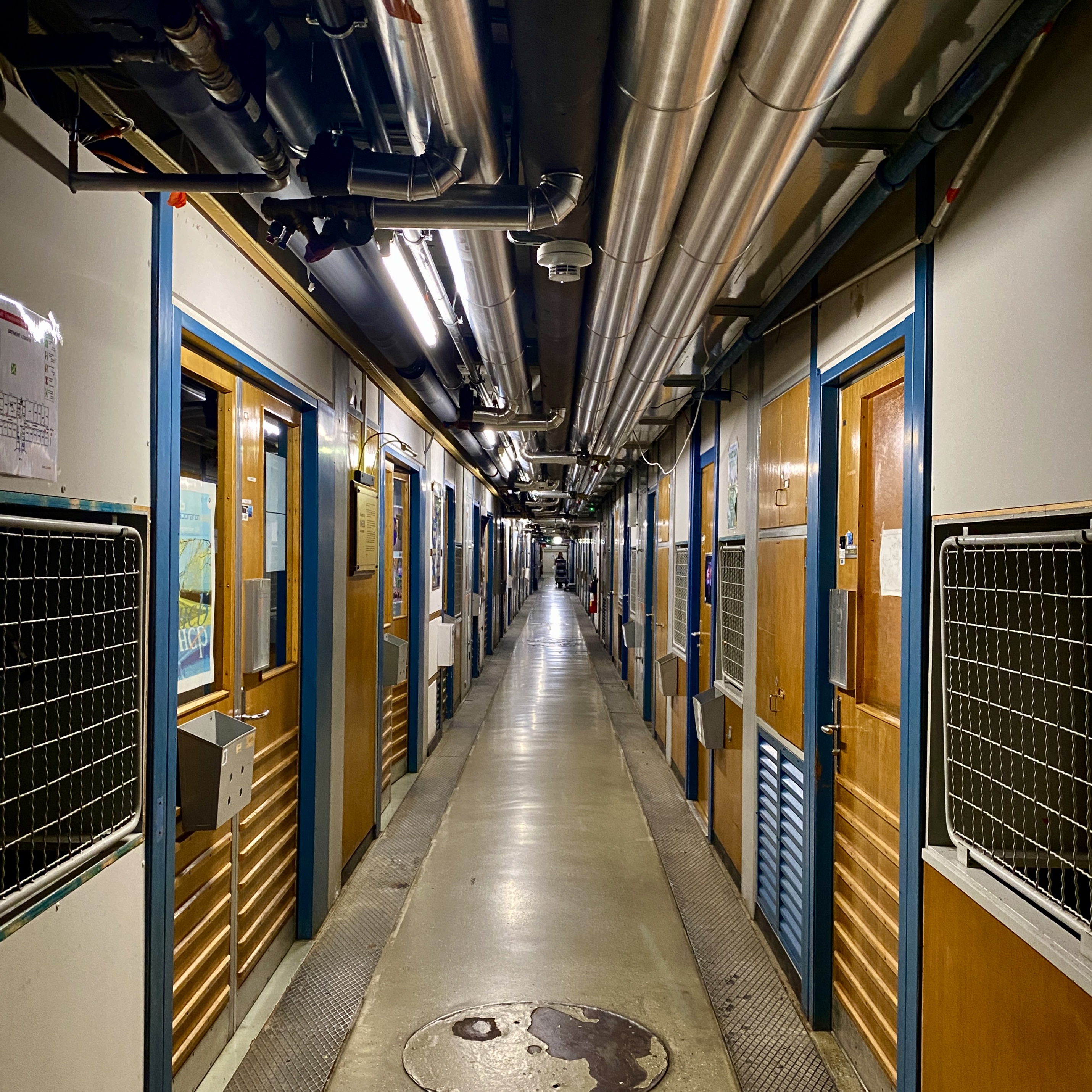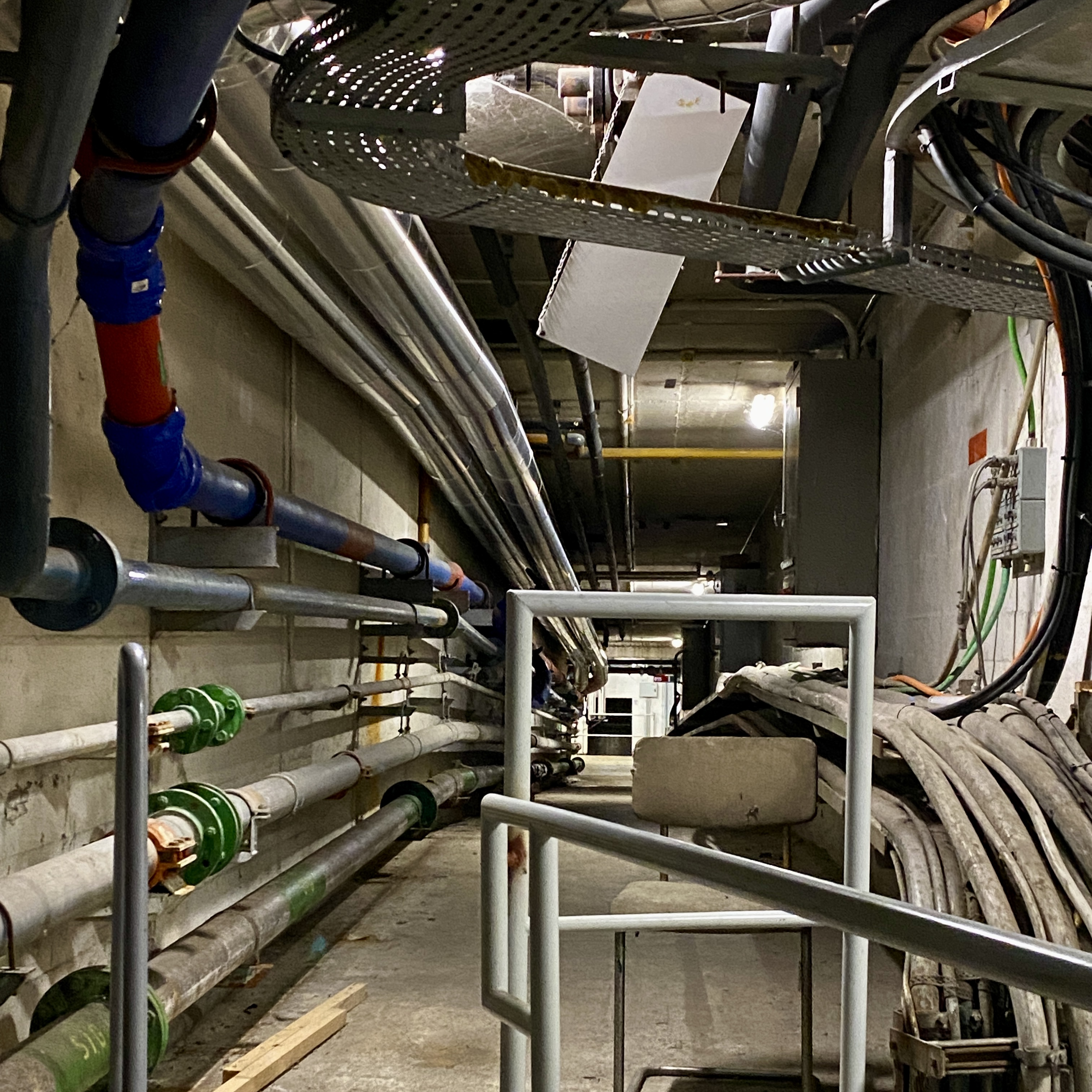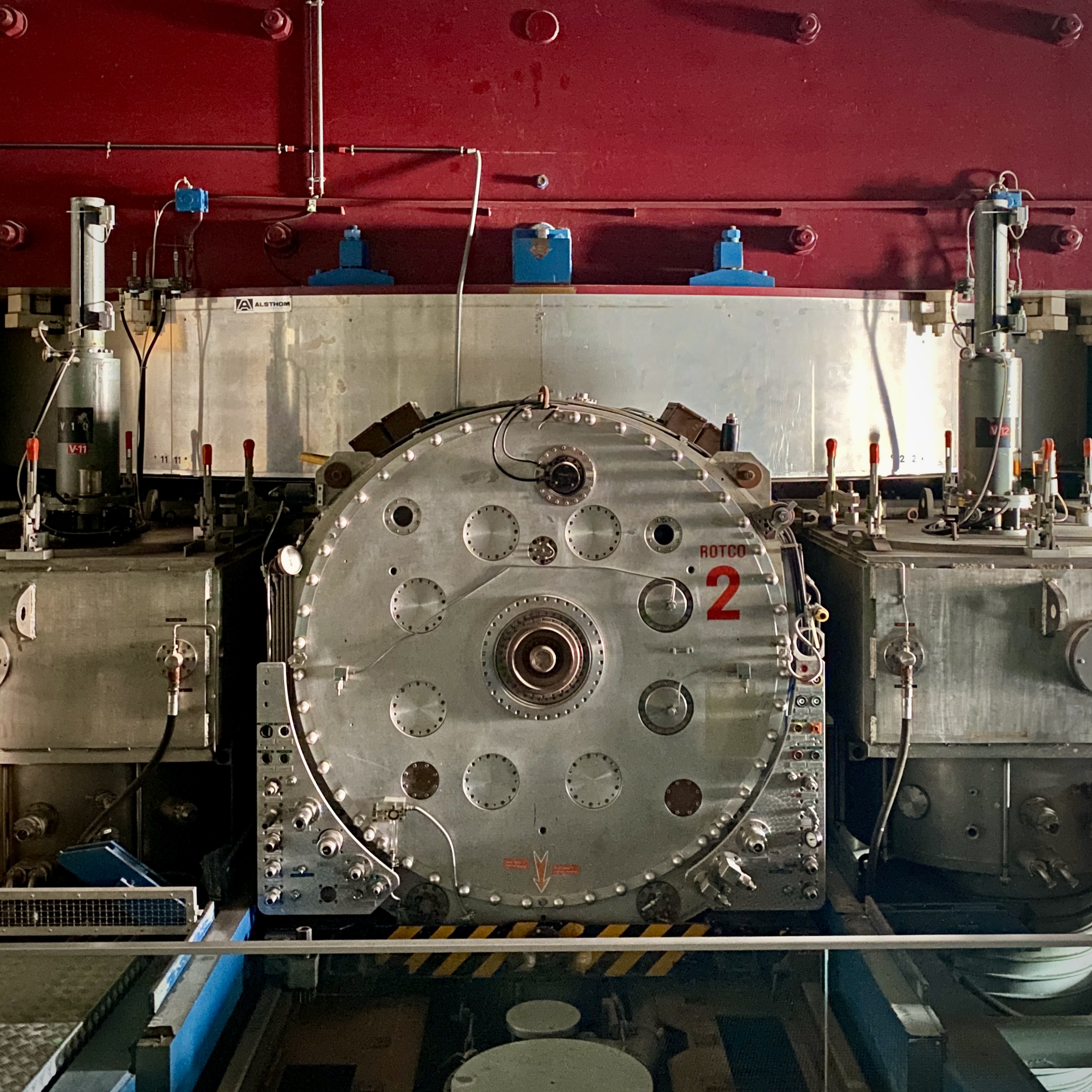Passing by the old and overgrown “particle garden”, a.k.a. the “Microcosm”, a kind of memorial / resting place for several “ancestral machines” developed at CERN in the 1960s and 1970s, such Gargamelle (top left, an old friend!), and the BEBC (Big European Bubble Chamber), which is a bit like an Apollo-era spaceship… Also, a rare sighting of the CERN sheep, which keep the grass low in the ex-experimental zones where people don’t want to go (and yes they kind of glow).
All posts by henschke2024
Mystery delivery
Finally, after 10 days and a nearinfinite amount of customs clearance paperwork, my mystery suitcase has been observed and collected: the waveform has collapsed in my favour!
Down by the LHC
Today put a more contemporary spin on things, with visits to ALICE and CMS, two detectors / experiments at the Large Hadron Collider. As the LHC is 27 kilometres in circumference (and 100 metres underground), it is an 8 km drive across to CMS, which is on the opposite side of the LHC to the main CERN site. It was a kind of nostalgic to visit the CMS complex, as I have been there several times over the years (it also reminded me of feeling overwhelmed and wondering what i was doing there).
We took the lift down 80 metres, to the top access tunnel airlock, but that’s as far as we could go, as the LHC is currently active (and thus producing vast amounts of radiation from the 14 trillion electron volts of energy produced in these particle collision detectors 40 million times a second).
Even though the 10 metre thick concrete walls I could kind of feel the energies, or at least the intense magnetic fields coming from the Compact Muon Solenoid. Around its core is the most powerful superconducting magnet in the world, focusing the energy emissions from the subatomic particle collisions within. It was making my telephone camera do weird things… but I got some photos before it fuzzed out, including one of a lo-fi field detector, a chain of paperclips hanging from a pipe, which was bending in a curve, showing the form of the magnetic field.
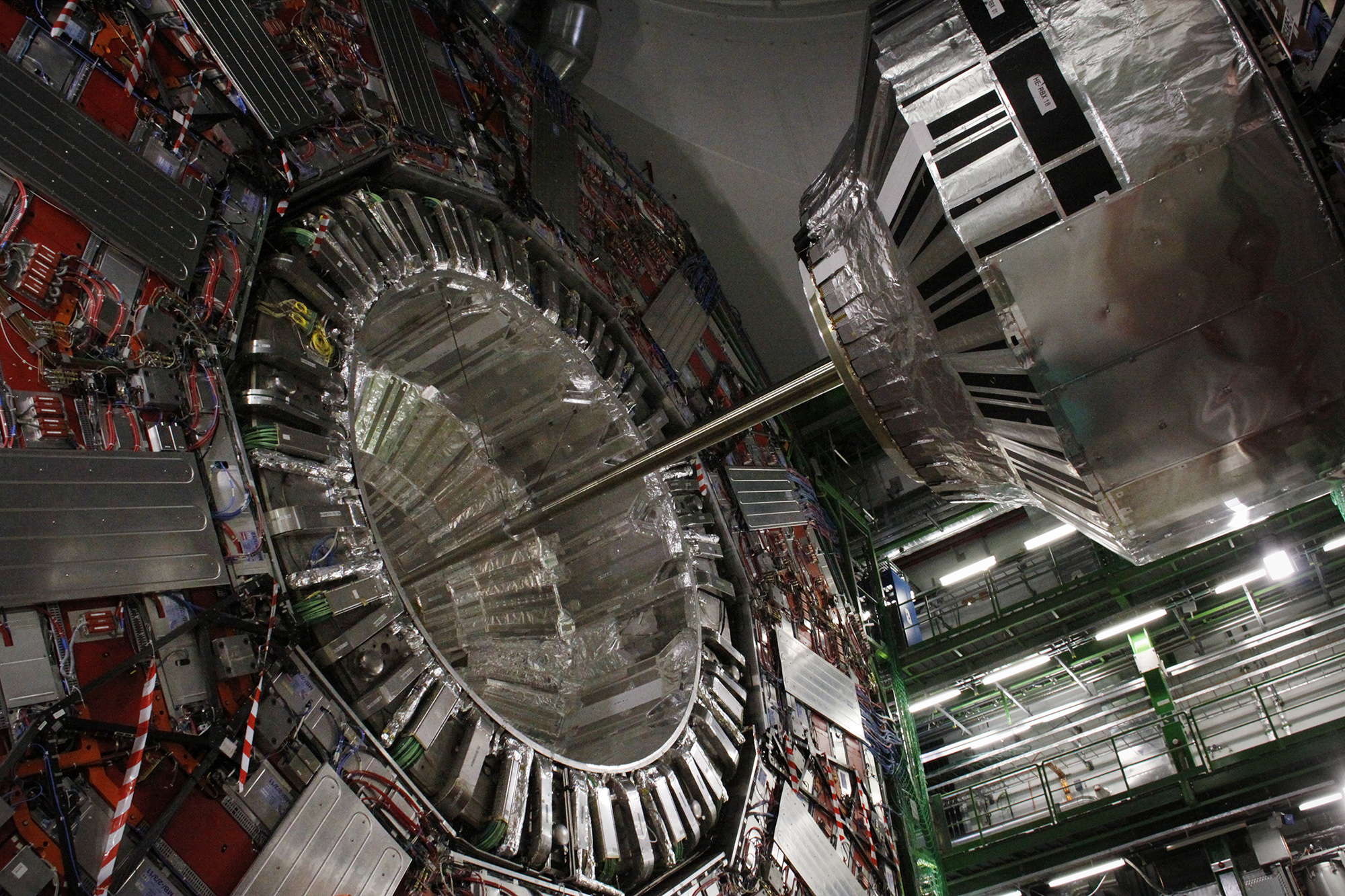
(here is a photo I took of the CMS detector in 2016)
Week 1, done!
Thoughts so far, and a few glimpses into the past and the future.
It has taken me a week to get my bearings, and sort out some of the bureaucratic machinations. There are difficulties navigating the systems without a map, and several people, including me, pressing the wrong button on some form, have made the terrain more difficult than it could be. I am still waiting to pick up a key piece of equipment I sent over, hopefully Swiss customs will release it and I will receive it tomorrow. That’s where people with deep inside knowledge, such as Mick Storr, can help guide one through such a system.
Mick Storr, who is not surprisingly an ex soccer coach, has been getting me back up to speed with the principles of how CERN works, on social administrative and scientific scales. It is at the intersection of these three dimensions, the human, the institutional, and the physics dimensions, where things take shape – and you’ve got to get all these variables working in order to make things happen. These knowledge systems must all be understood to some degree – science at CERN is more than just “science”. And why should I have to have some understanding of all this? Not to try and be a scientist, but to be able to engage both critically and creatively in a way that has a resonance with the subject/matter at hand. And exploring the physical spaces around the CERN site lets me scope out possible projects and collaborations (with both scientists and devices).
During our journeys around the site, we have made some interesting finds. When Mick showed me around some of the big old buildings he worked in, once buzzing with energy and activity, but now used as storerooms, we rediscovered former experimental devices, some of which have been literally covered in sheets and forgotten. The anthropologist of physics Sharon Traweek (whose book I found in the 24/7 CERN library) calls these “ancestral machines”. In a way they are a key to understanding the cultural and scientific nature of CERN experiments.
Such apparatuses are the material forms and symbols of important milestones in the history of this place. They are indeed the physical history of the scientific understanding of how the universe works. Although this is a big statement, it rings true on some levels – as the mediators between the human and the subatomic realms, insights gained from such experiments help us understand and predict certain fundamental forms and forces. In practical terms, understanding how subatomic particles behave let us coax them into doing tricky things, such as making electrons flow around digital computers (and of course incidental CERN inventions such as touchscreens and the world wide web, made by Mick’s roommate is Tim Berners Lee). But what could we do with antimatter or Higgs Bosons? We may soon see.
And where will things be in the future? More than one person has said to me, in more than one way, that today CERN seems to be at a crossroads in its history…
D3 evening reflections
Now that I feel grounded, I have taken an evening stroll to the middle zone of CERN, an area that contains the original experiments from the 1950s and 1960s, but which is kind of abandoned. This is literally on the border of Switzerland and France, signified by a century old stone marker (see pic 2). This area feels like something out of a Tarkovsky movie, a landscape of obscure forms and shapes, old buildings and bunkers strewn around artificial undulations of the land, under which lie still active (and radioactive) experiments quietly humming in the evening air. Each building is numbered, yet in no apparent order, which hints at the makeshift nature of scientific experimentation, and maybe even the ad-hoc qualities of the universe itself when challenged with such experiments that summon forth fundamental essences from within the heart of matter.
Aside from the obvious attractions (the search for the origins of the universe and all that) and the secrets buried below the surface of this place (both materially and conceptially) there is something that pulls me to this place. For reasons I can’t consciously pin down, I feel a calling to this zone, maybe it’s something to do with my childhood, partially growing up in the industrial wastelands out the back of Altona and hanging out with my dad at the Esso oil refinery in Hastings. Even though this area is a kind of dreary forgotten wasteland, it is one of my most favourite places in the world.
Day 3 (goes 3D)
Survived another day, Day 3 has been 3 x intense!
I spent the morning with local legend Mick Storr, who has been at CERN since 1974. We discussed the material genealogies of CERN experiments, and Mick showed me around his old haunts, describing the “ghosts” of the experiments and machines that once lived in these sites. Some of the spaces are now used to store old detector parts (such as ATLAS, top left image), some have been repurposed to make new accelerator components (such as the superconducting magnets, bottom left and centre). After a bit of critical contemplation, he really engaged with the Indigenous philosophical concept of “everywhen” after I talked to him about different understandings of place, time and being, with some great prompts from the ISEA theme description (see here) and found both personal and collective CERN resonances with this deep concept…
And in other news, I have spent the last 3 days in a kafkaesque labyrinth of bureaucracy too complex and opaque to even explain, trying to reactivate my CERN user access, and at 5pm today it finally seems to work! Such institutional complexity comes with the territory, but I must say it is not for the faint hearted – particle physics seems easy compared to this! But now that I am really here things seem extra-dimensional, and I feel actually finally three dimensionally embedded in this space.
Day 2
A trip into the French countryside.
A busy morning with several planning meetings, plus more administrative moments, then an impromptu trip to the French side of CERN. The site is quite large and spans the Swiss-French border (and that’s not even counting the 27 km LHC). A summery afternoon with a spontaneous tour of the cryogenic-magnet test facility (with me being thrown into the role of tour guide!), then a wander around the local landscape, dotted with artificial hills, upon and underneath which sit buildings housing various old and new experiment zones… and to top off another high-energy day, a twilight thunderstorm!
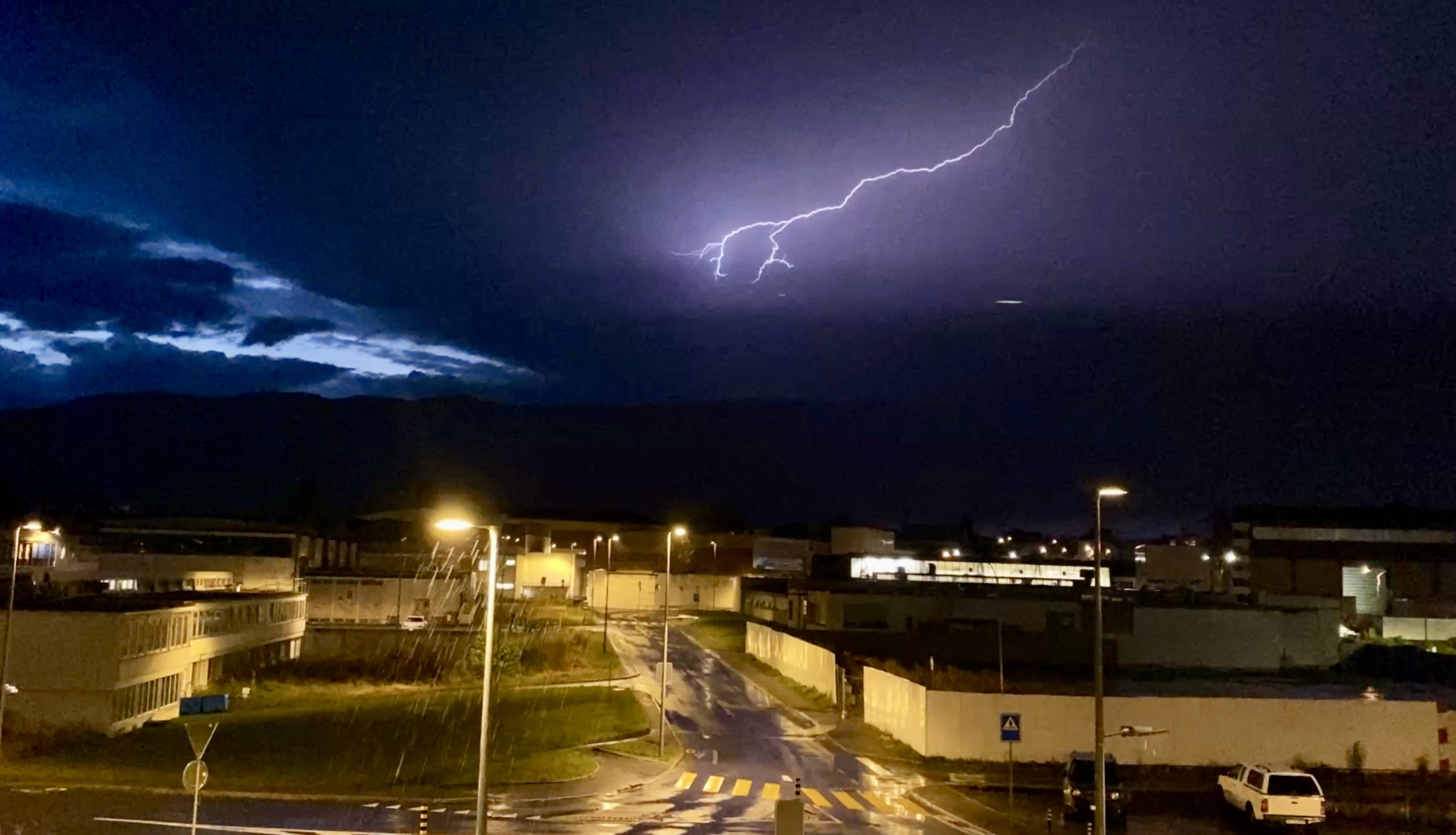
(p.s. i should note all photos are/will be by me, and no effects, AI, etc)
Day 1
It’s Day 1 and it’s already begun!
Touched down in Geneva around dawn after a 24+ hour series of flights, got to CERN and initially hit by a quasi-paradoxical bureaucracy loop, trying to re-activate my access but needing to get onto the CERN network to get access to get onto the CERN network to activate my access etc, delirious meetings at the user office, filling out online forms repeatedly, then when it’s ready to press submit, a sudden flash of dark and a blackout knocked the whole system out (and that’s before breakfast and after 24 hrs without sleep).
Then a series of spontaneous meetings, with old collaborators suddenly popping up within minutes, like getting the band back together! But the highlight was when I first arrived on site, wandering down familiar old corridors (and seeing even a few traces of my previous projects still here and there!) The main CERN complex is a vast labyrinth of labs and offices that become increasingly old and industrial, with a unique dusty acrid smell. Somehow I was drawn by chance, yet perhaps inexorably, to the first CERN experiment, the SynchroCyclotron from 1957, a massive magnet around a round accelerator about 10 metres wide (inactive yet still slightly radioactive after all these years).
Day 0
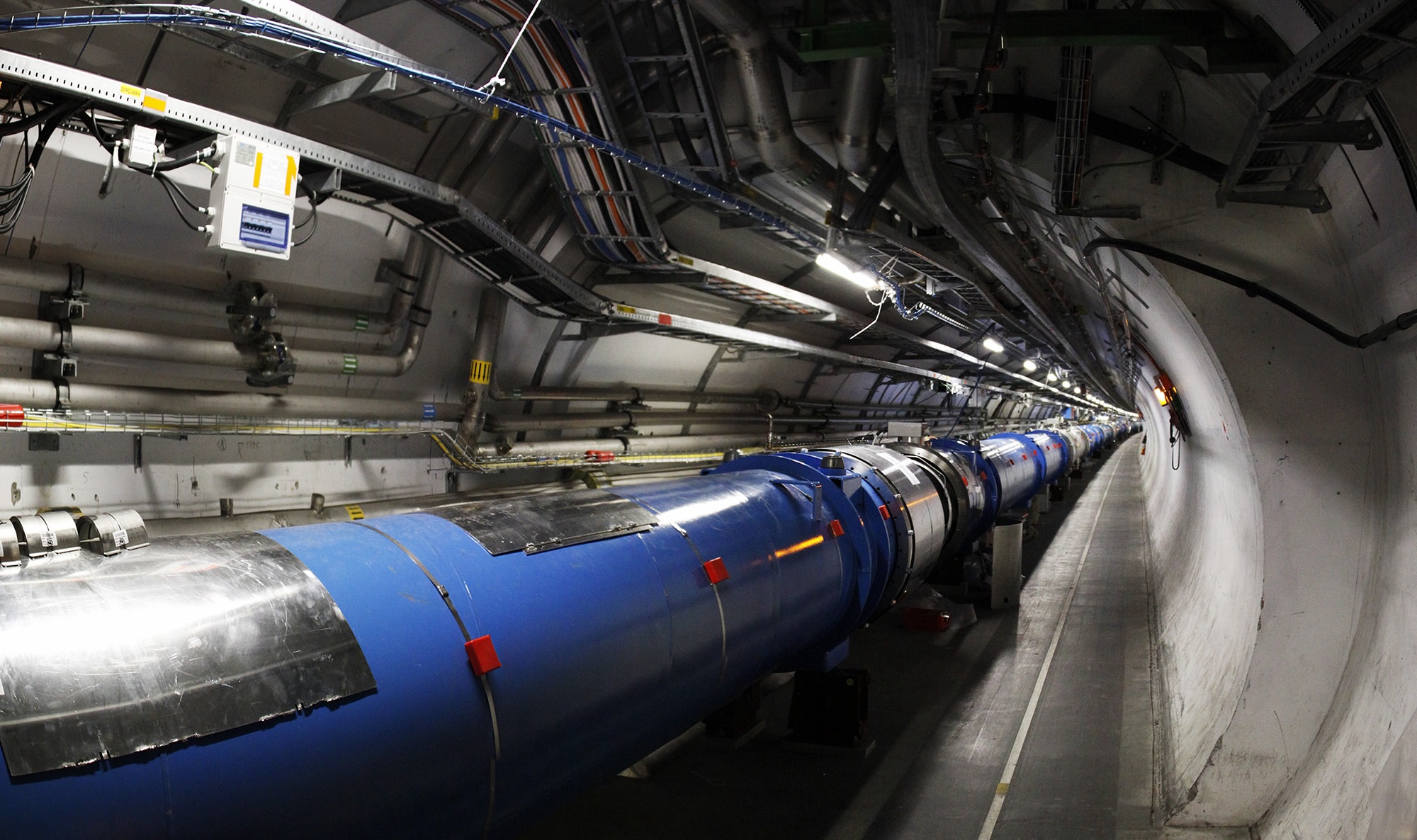
It’s Day 0!
This is a photo I took just over a decade ago, my first time in the arcing tunnel of the Large Hadron Collider, a circular particle accelerator 28 kilometres in diameter, the largest scientific experiment in the world. I was with a curious collection of artists and scientists: Donna Kendrigan, artist; Ariane Koek, director of art@CERN; Ralph Steinhagen, accelerator physicist; Bill Fontana, artist; Roger Rassool, physicist; and Mark Boland, accelerator physicist and ANAT board member (see video of the event). There was a palpable energy in the air, one could kind of smell the energies from the trillions of electron volts of energy in the particles which speed around this ring millions of times a second…
A decade later I am set to return to CERN, to conceptually and materially re-explore this hidden universe buried beneath the pastoral landscape around Geneva. And if the LHC seems vast and hard to comprehend (as it did then), CERN are now developing the Future Circular Collider, an accelerator 80 kilometres in diameter. If the LHC experiment led to the discovery / creation of the “God particle”, what will the FCC reveal and manifest? Worlds beyond the “standard model” of physics (which explains basically all of the universe we can perceive).. but maybe nobody knows! And what might I discover on my ANAT fellowship at CERN? I really don’t know!!

